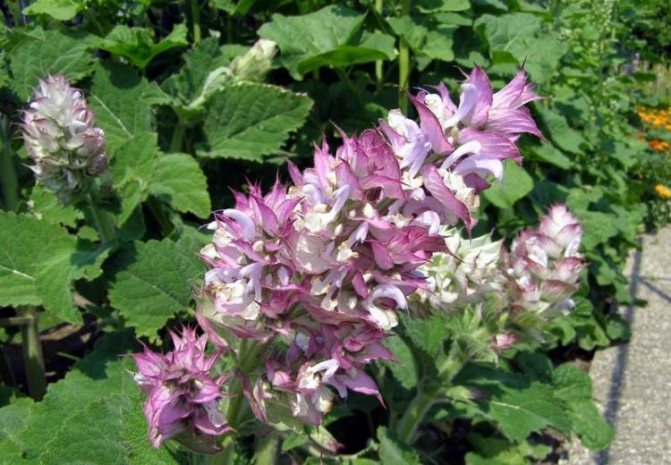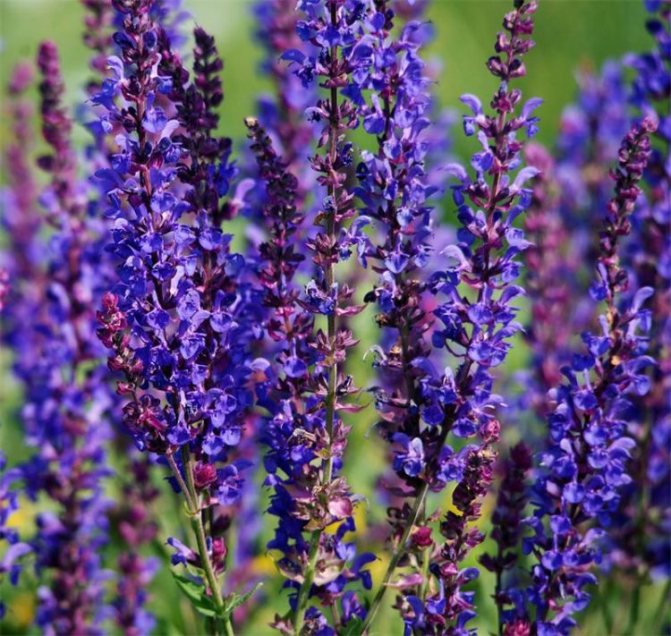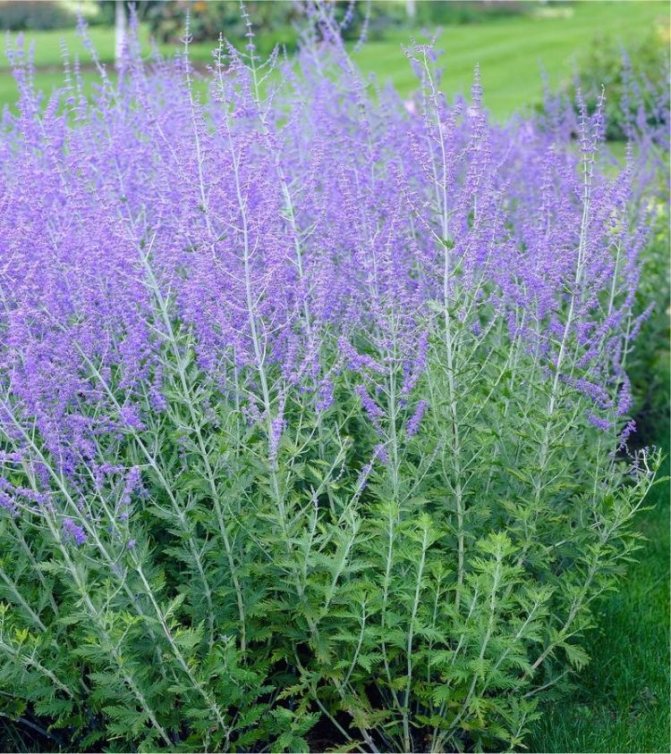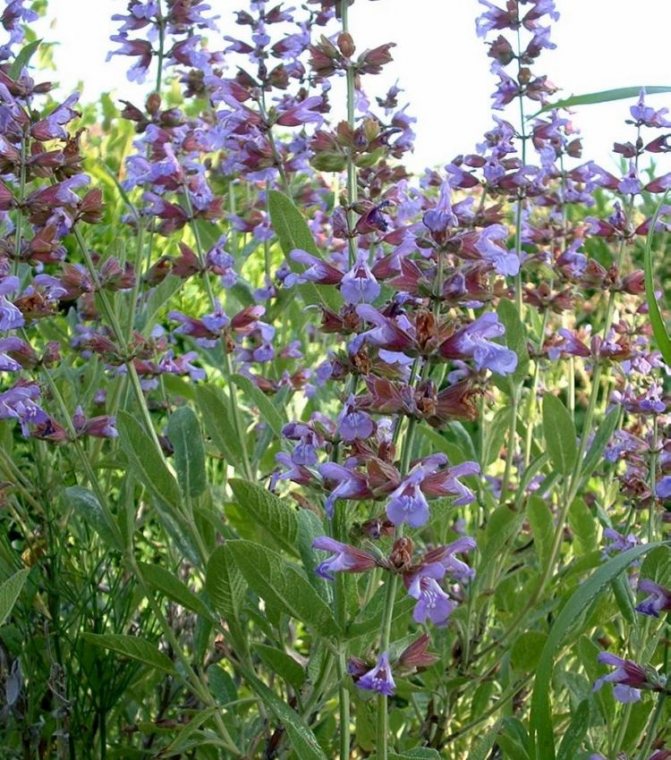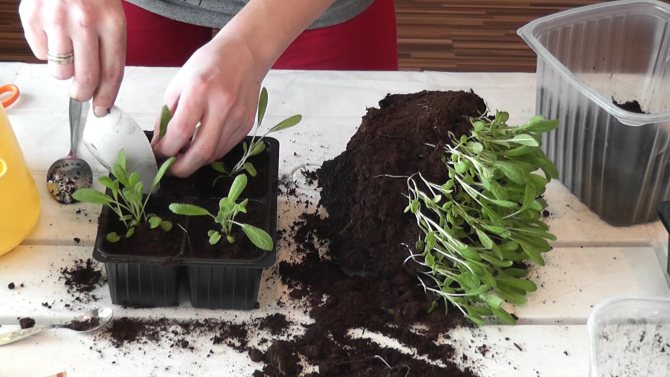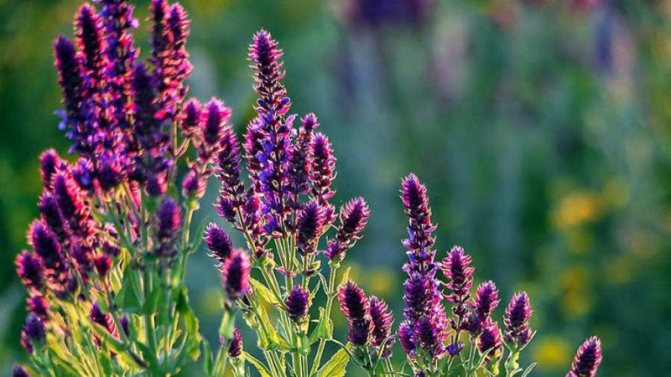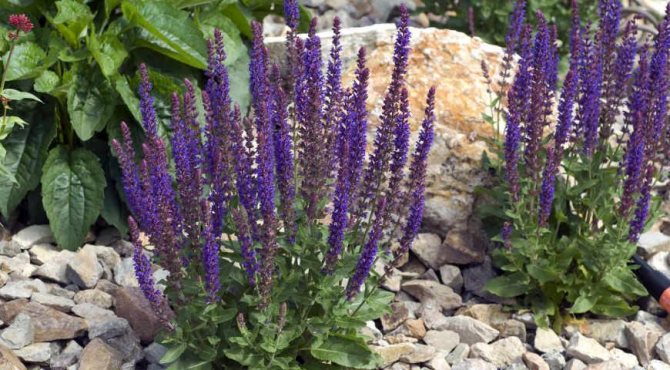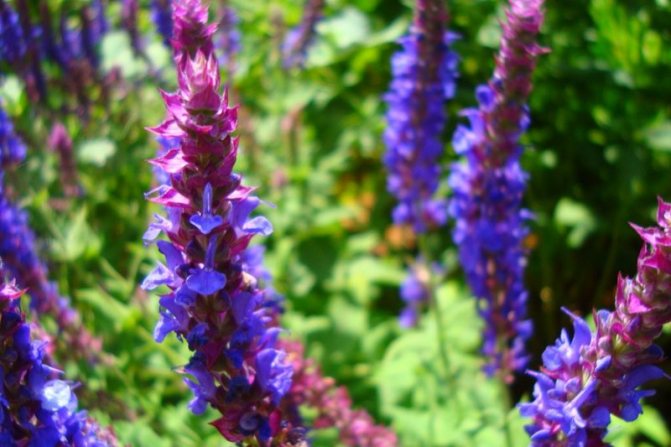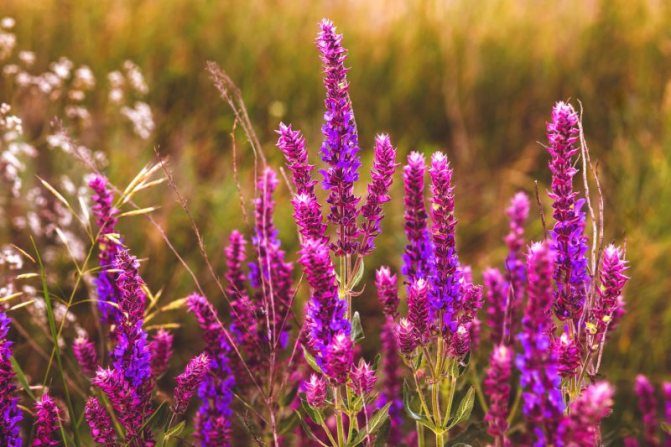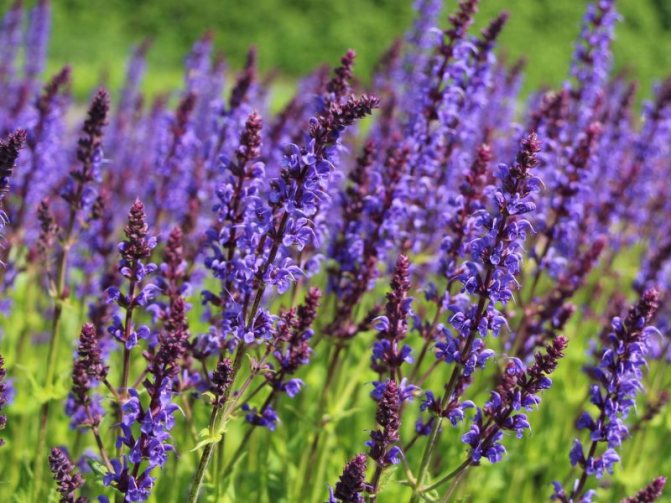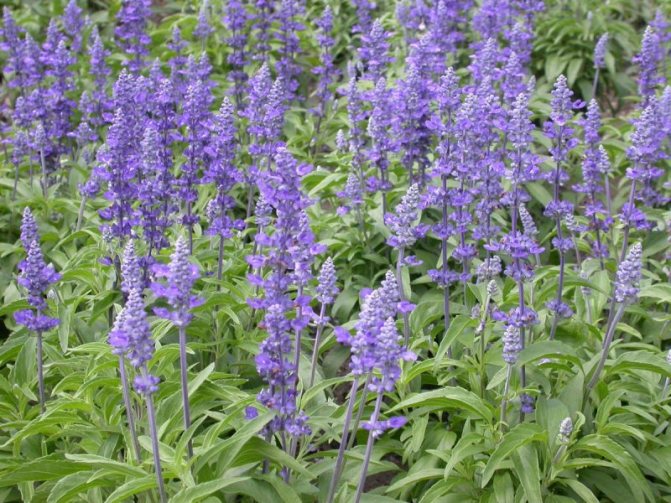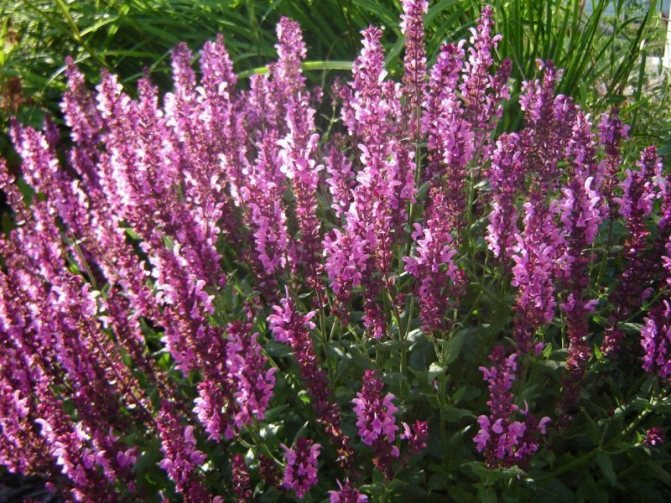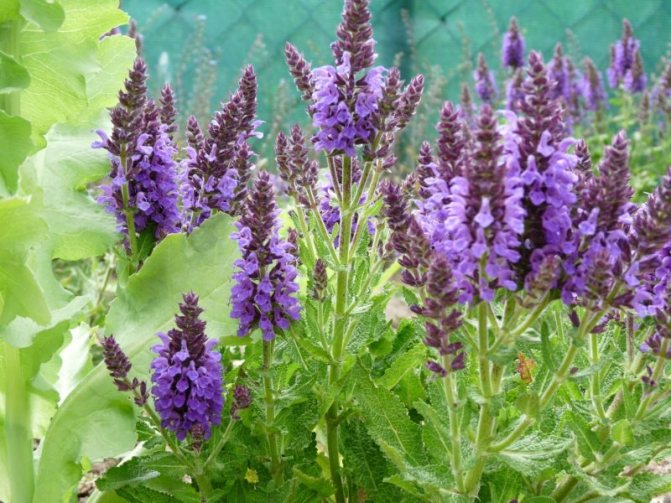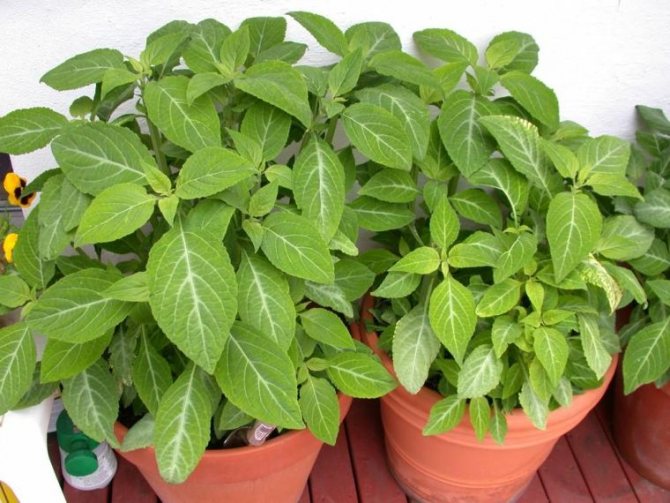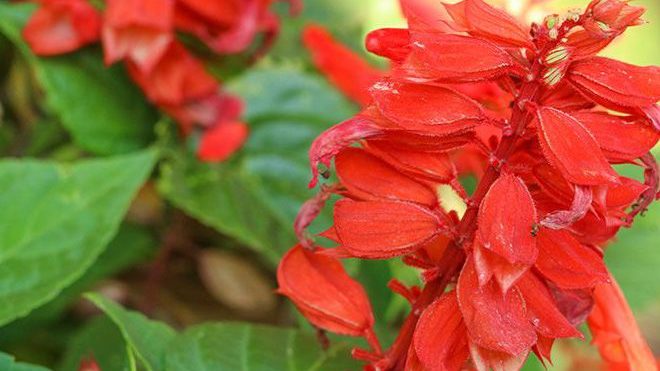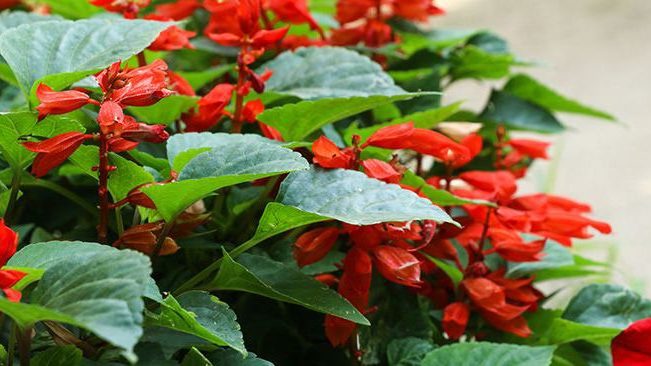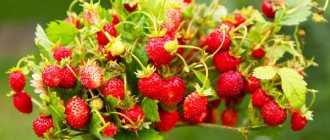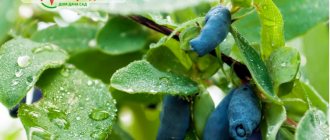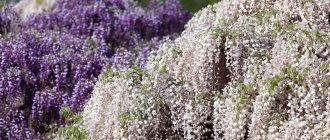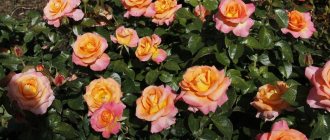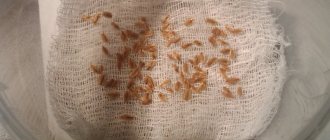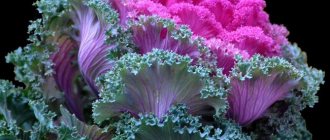All articles of the author
Maxim Fadovsky
A specialist in a healthy and healthy lifestyle.
Modern gardeners are not limited to growing traditional crops such as potatoes, cucumbers and tomatoes at their dachas. Many are experimenting not only with zoned plants, but also with exotic ones, for which the local climate is unfamiliar. Growing often ends with fruits and seeds. Sage seeds can also be grown in the country or on a windowsill.
What sage should be planted in the country
Sage belongs to the family Labiatae or Clay-flowered. It is a very large genus and is distributed almost all over the world. It is mainly represented by perennials, sometimes dwarf shrubs. So you can choose for every taste, especially due to the numerous varieties with a very different color of racemose inflorescences, consisting of helmet-shaped flowers. In our country, the name "sage" is strongly associated with a medicine for gargling, while "salvia" is associated with an ornamental plant. Although in fact it is one and the same plant.
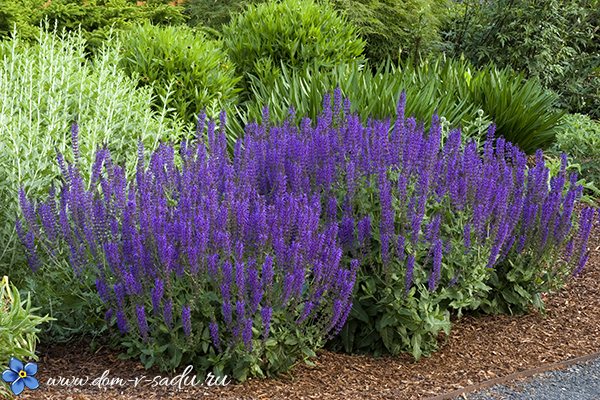
Annual salvia brilliant or brilliant sage, was widespread in urban landscaping during the Soviet era. Sage was planted along with silvery cineraria.
In Europe, we love sage and all its varieties more. For Russia, this variety is more promising, since its original species grows in the nature of central Russia. However, remember: varieties may be less resistant. This is especially true of variegated cultivators of the most famous medicinal sage.
There are two more interesting species that are still rare guests in our gardens. It is an early flowering drooping sage, distinguished, as the name implies, by drooping blue-purple inflorescences. And sticky sage with yellow flowers, one of the few that prefers moist soil.
Sage varieties
| View | Description |
| Drug | Reaches a height of 70 cm. The leaves are narrow - up to 1.5 cm wide. It is used in cosmetology, cooking, medicine. Popular varieties of the species:
|
| Forest | Mostly found in the Mediterranean. It has narrow leaves and a herbaceous stem. Most inflorescences are blue or purple in color. It has undersized (up to 50 cm in height) and tall (up to 90 cm in height) varieties. |
| White sage (Apiana) | Has a rich strong aroma and a bitter taste. Fragrant and often used as an incense. It has long been believed that its aroma cleans the room of negative energy. This medicinal plant is native to California. It is used as an essential oil and as an antibiotic, antifungal and antispasmodic agent. |
| Perovskiy Russian | It is considered a Russian sage species. The plant has become popular due to its long and colorful flowering. The unpleasant small flowers are compensated by the panicle inflorescences, which give the salvia a special effect. The plant is prized for aromatic essential oils and as a special seasoning for many dishes. Petrovka differs from other varieties by long flowering. |
| Nutmeg | For several centuries it has been considered a medicinal plant that is used in the treatment of female diseases and prevents inflammation.The essential oil of the plant has a wound healing and antibacterial effect. Common varieties of the species:
|
| Lugovoi | It is valued as an ornamental plant due to its bright green color of leaves and inflorescences of bright colors. Popular varieties:
|
Sage for the garden - planting and care in the open field
If we talk about ideal growing conditions for sage, then all sage grows well in sunny places with well-drained fertile soils. Propagated by seed or division.
Annual garden sage can be planted at home with seeds. Sage seeds are grown from late February to early March. It is during this period that sage is planted with seeds for seedlings, and already in late May - early June, flower seedlings are transplanted into open ground.
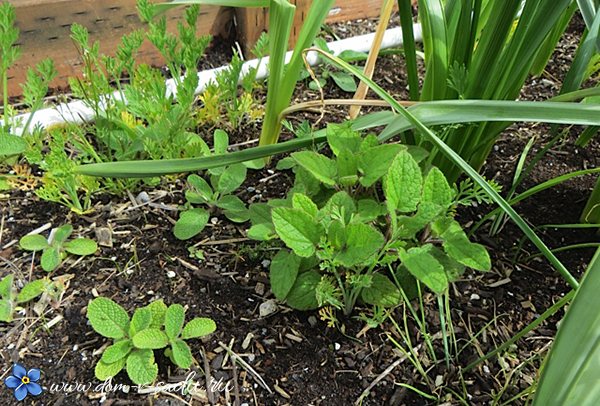

Perennial sage reproduce by dividing overgrown bushes in early fall.
The flowering time is long - from June to October.
Of the features of care, it is worth advising for annuals:
- planting sage seedlings in the country is better at the stage of staining the buds;
- the ends of the stems need to be pinched (if you don't know if you need to pinch the salvia - yes, you should!).
In perennial sage, faded inflorescences are cut off and tied up in blown areas.
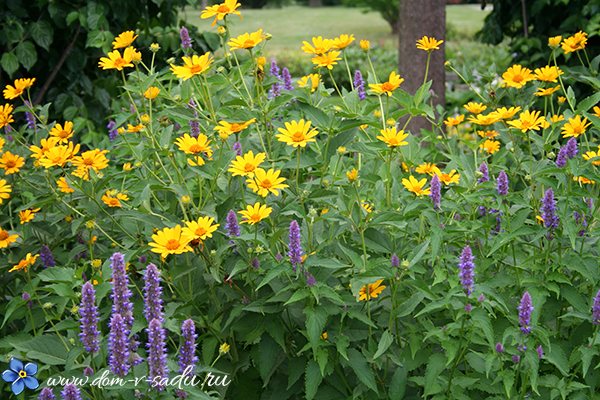

How to grow houses on a windowsill?
Considering some peculiarities, sage can be successfully grown on a windowsill, like a potted plant. In order to grow sage at home, it is necessary to prepare a sunny place that excludes direct rays. Since the plant has a pronounced fibrous root system, containers for growing sage should be selected at least 1.5 liters. in volume.
The soil is chosen loamy, well-drained. You can use a cactus substrate and add perlite or vermiculite for lightness. The plant can be sheared, thereby giving any shape, this will provoke the appearance of new shoots, increasing the bushiness and improving the appearance. Centenary on the windowsill.
We grow annual sage in the country in a flower garden.
Sage or salvia are great for creating contrasting flower beds. The center of the composition can be a bright, dominant plant, such as roses. And frame them with purple spikelets of salvia, thanks to which the roses will look brighter and more spectacular.
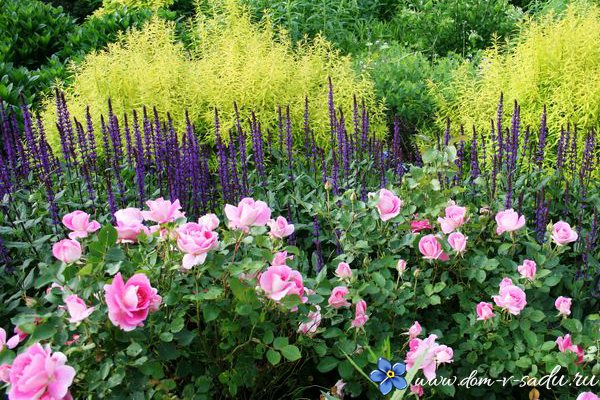

With the help of this unpretentious and long-flowering plant, you can create bright autumn flower beds, where annual sage for the garden (aka salvia) is planted in the center of the composition, and low varieties of annual zinnias are sown around. Since both those and other flowers are unpretentious, the care for such a flower bed is minimal.
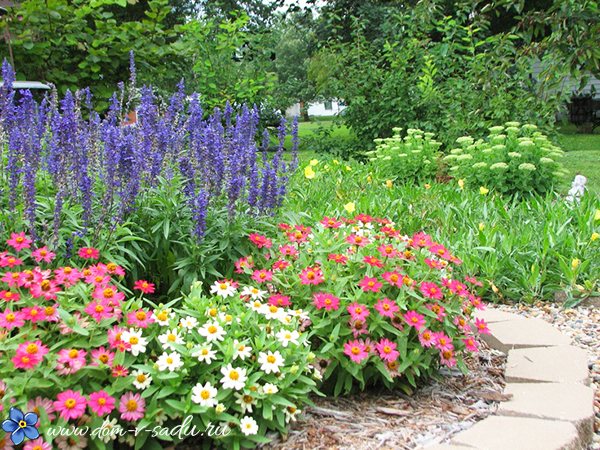

Sage can perfectly decorate a private house, a fence and any buildings. It can be planted along the house.
Sage, aka salvia, is another excellent representative of ornamental and medicinal plants. It belongs to the glorious genus of lamines, which gave rise to many beautiful and useful flowers. I love its beautiful, narrow foliage and blue flowers. After articles by one author about sage, I wanted to learn as much as possible about such a familiar and beautiful plant. It turned out that the shapes and colors of sage are different: from the usual to the most outlandish and extraordinary. There are 700 different sage species in the world.
Sage is a perennial, but there are both annual and biennial species. Sage inflorescences are collected in panicles or spikelets. Stems are erect, can branch and reach a length of 120 cm.
Sage is an excellent helper in cooking and medicine. In ancient Rome, it was used in the treatment of many diseases, today it is just as relevant.
Sage seeds and their uses
Sage or Salvia is a perennial plant, although annual and biennial species are found in nature. In sage grown in European territory, only the tops of the shoots and leaves are mainly used in folk medicine and herbal medicine, since it is in these parts of the plant that useful trace elements and essential oils are maximally concentrated.
Sage seeds are used mainly in the Spanish plant species. Chia, or Spanish sage, is an important crop for the peoples of Mexico, just as corn and beans are considered a symbol of life by the Aztecs. The seeds are eaten as an independent dish or in combination with vegetables or cereals, flour or oil is made. Linseed oil.
What do they look like?
Sage seeds are oval and have a slightly relief, shiny surface. They resemble beans in appearance. The color can be black, white, brown, gray. The average chia seed diameter is 1 mm. The taste and aroma are mild, nutty, combined with many products.
Important! When choosing seeds, you should carefully evaluate the appearance! Wrinkled seeds are not allowed. They should be smooth and even.
Depending on the type of sage, the color of its seed also changes, but this practically does not affect the nutritional composition of the product. 100 g of sage seed contains 486 kcal, 16-25 g of proteins, 20-30 g of fat, 40-60 g of carbohydrates.
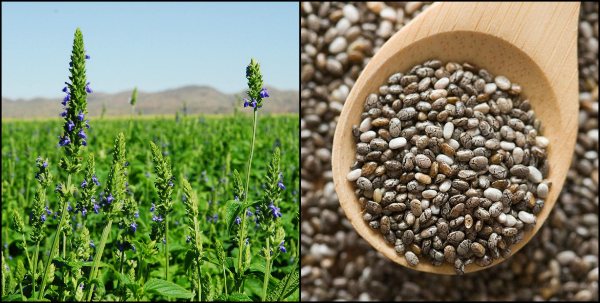

This is what Spanish sage and its seeds look like.
Where can I get it?
Spanish sage seeds can be purchased online from online health food stores and offline from pharmacies and health stores. When buying in any of the ways, you should pay attention to the documents confirming the quality. But only in the store can you evaluate the organoleptic characteristics (taste, smell), as well as the shape and appearance. The downside when buying offline is of course the price. Also, sage can be grown independently in the country or even at home on the windowsill.
Benefit for health
To understand the beneficial properties of the seed, it is necessary to evaluate the composition:
| Vitamins: | |
| Carotene (A) | 54 IU |
| Thiamin (B1) | 0.62 mg |
| Riboflavin (B2) | 0.17 mg |
| Nicotinic acid (B3) | 8.83 mg |
| Folate (B9) | 49 mcg |
| Ascorbic acid (C) | 1.6 mg |
| Alpha-tocopherol (E) | 0.5 mg |
| Minerals: | |
| Potassium | 407 mg |
| Magnesium | 335 mg |
| Calcium | 631 mg |
| Sodium | 16 mg |
| Phosphorus | 860 mg |
| Iron | 7.72 mg |
| Manganese | 2,723 mg |
| Selenium | 55.2 mcg |
| Copper | 0.924 mg |
| Zinc | 4.58 mg |
The composition contains essential amino acids: arginine, trionine, lysine, valine. Saturated and unsaturated fatty acids: palmitic, stearic, linoleic and alpha-linoleic, omega-3.
Eating sage seeds regularly will help:
- improve the functioning of the digestive system;
- strengthen dental and bone tissue thanks to calcium;
- gently regulate body weight, due to the increased hydrophobicity of the seeds (increase with the addition of liquid by 12 times);
- lower blood cholesterol;
- normalize high blood sugar levels;
- support the work of the cardiovascular system.
The benefits and harms of sage seeds are individual for each organism, they are not a panacea for curing diseases, but will help saturate the body with easily assimilated nutrients.
Potential harm to the body
When using a new substance, it is necessary to consult a specialist. Improper use or application of poor quality seeds can lead to:
- an allergic reaction;
- bloating and diarrhea;
- food poisoning.
Planting sage
Most species of salvia officinalis like soils of normal acidity (5.5-6.5 pH). Plant the sage in a well-lit area. It will grow better on light, fertile soils. Loamy soils are well suited for this.
To enrich the soil before planting sage, humus or compost, as well as phosphorus-potassium fertilizers, are introduced in the fall for digging. At the onset of spring, the soil is leveled and broken with a rake, after which nitrogen fertilizers are also introduced.
Sage has been growing in its place for over 8 years. This culture grows well, so the seedling method can not be used, but sow seeds directly into the ground in early spring (March - early April, using film) or in the fall under the snow. It does not matter if you are delayed with planting, you can sow in May, then a film shelter for seedlings is not needed. At the same time, stratification and any other measures for germinating seeds are not required. You can arrange a ridge for sage, make a groove and seal the seeds to a depth of no more than 2 cm.Sage grows as a bush, so it is better to leave about 30 cm between the plants, and take about 50 cm between the rows.
It is not worth sowing sage after relatives from the lamb family. The precursors of sage can be potatoes, cabbage, onions, legumes.
Diseases and pests of sage
Sage bushes are considered disease and pest resistant because this herb is able to fight disease.
The reasons for the defeat of sage can be improper care:
- Excessive moisture can lead to mold. Therefore, it is important to monitor moderate soil moisture and prevent water stagnation. You can get rid of mold by spraying the plant with a sulfur solution.
- Thickened plantings provoke the appearance of spider mites or slugs. As a "treatment" use a tincture of onion peel, garlic with the addition of a solution of laundry soap.
Sage care
Pruning. In the second year after planting, like many spicy herbs with dense inflorescences, sage is renewed by cutting (10 cm from the soil surface).
Watering. Sage tolerates drought well, but it needs moisture to keep the greens juicy and tender. Otherwise, the leaves will simply become very tough. But it is not worth pouring, he does not like this.
Fertilization. In the spring before flowering, fertilizing with nitrogen mineral fertilizers is carried out, in the fall, after the plant is cut off and prepares for winter, many gardeners carry out fertilizing with phosphorus-potassium fertilizers in accordance with the norms on the package.
Tips from Experienced Gardeners: How to Grow Sage Vegetatively?
Sage should be propagated vegetatively in the second decade of spring or in early June in accordance with the instructions:
- Cuttings are formed only from adult mother bushes. For cuttings, it is better to cut off the top of the young shoot.
- Cutting is carried out with a sharp knife or thin blade. The size of the cuttings is 10 cm.
- Cuttings are planted in greenhouse conditions in loose, moist soil. Nitrogen fertilizer is added to the soil before planting.
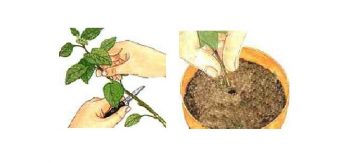

Cuttings are planted in fertile soil to a depth of 8-10 cm. The soil pH should not exceed 6.0.
- The root system of cuttings develops in 15-20 days, such cuttings can be planted in open ground.
- For planting cuttings in a permanent place, it is recommended to treat the roots with a fungicide solution.
- Water the plant as needed, since it does not tolerate waterlogging of the soil.
- Cuttings are planted only on the sunny side of the site.
- For the development of young shoots on cuttings, they should be fed with phosphorus-potassium fertilizers.
Sage species
After the studies carried out by the Novosibirsk Research Station, 12 species resistant to steppe conditions were selected. But they turned out to be so different in their characteristics that they were divided into three groups:
1. Plants of American origin were identified in this group, their habitual environment is subtropics. In their natural environment, such plants live for several years. In the middle lane in winter, the plant dies, therefore it is cultivated as an annual. At least 100 days will pass from germination to flowering. Therefore, the sage of this group is grown mainly by seedlings.
2. This group already includes varieties of Mediterranean sage. In their natural environment, they are perennial, but in our middle lane in the open field they will die in winter, so they have to be grown as annual plants. But it will take about 40 days from germination to flowering. This suggests that you can do without seedlings.
3. The most popular group with us. This group includes sage varieties that winter well in our open field. They are perennials in the temperate zone. This group also includes the Ethiopian sage, which is cultivated as a biennial. The most unaffected studies are Muscat, Marsh and Lavender Salvia.
I would also like to share with the reader photographs of different types of sage.
Salvia sticky
Salvia viridis
Salvia microphylla
Salvia dolomitica
The most winter-hardy sage: useful and decorative
Sage is one of the most useful medicinal and melliferous plants. Their diversity is amazing and reaches 1000 species (this is without taking into account varieties). Sage is mainly tropical and subtropical, but some grow in temperate climates as 1-3 year old grasses.
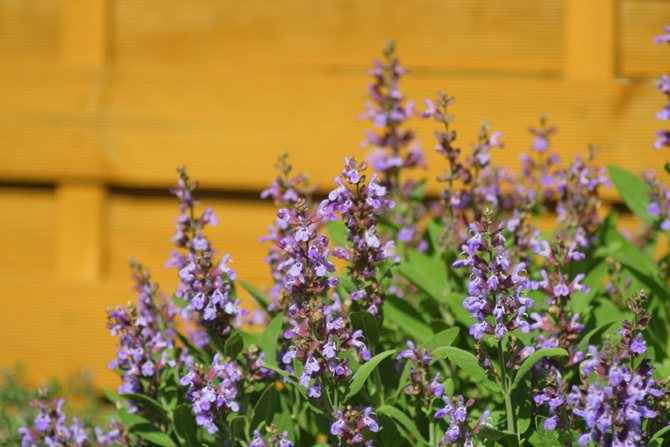

Marc St /
Today we will consider the most winter-hardy and popular representatives, because by planting sage in your garden, you will become the owner of an excellent medicine and fragrant herbal tea. And by sowing fields with sage, beekeepers will acquire unusually aromatic and spicy honey, as well as increase the immunity of their bees. At the same time, many sage have high decorative qualities, saturating the garden with colorful flower beds.
In addition to the peculiarities of cultivation, we present you with descriptive signs that will help every serious gardener to distinguish different types of sage, making the correct calculation for the medicinal and other properties of the plant.
Oak sage, or wild, forest, Moldavian, oak salvia (Salvia nemorosa) is a forest-meadow perennial, up to 1 m high. There are several stems, forming a small bush. Leaves are narrow, up to 10 cm long, serrated along the edge. Peduncles make up more than half of the plant, sometimes branching. In natural nature, the flowers are blue-purple, very attractive, fragrant. After flowering, the bracts become burgundy-purple, re-giving the sage a decorative outfit.
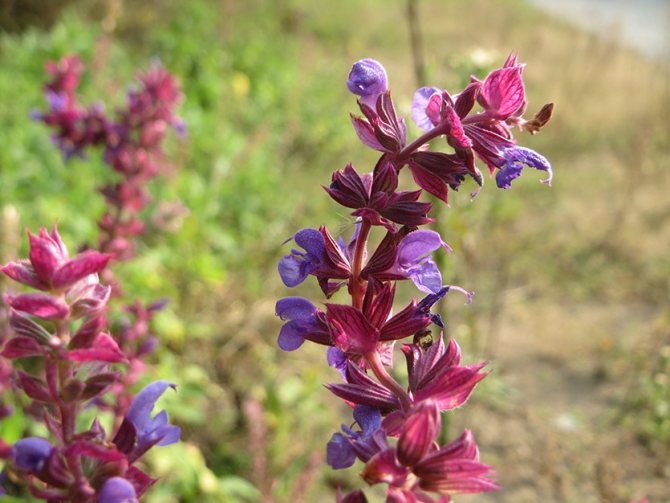

Andreas Rockstein /
Seeds are dark brown. Blooms in June - August, 45-60 days. Honey productivity is 110-300 kg / ha, honey is almost transparent.
It grows on forest edges, dry meadows, steppes and forest-steppes on loose fertile soils without stagnant water and close standing groundwater. It winters well in the Middle Lane, provided that the soil is covered with snow during late autumn and early spring frosts. Photophilous, like all sage.
Some popular varieties, which differ mainly in different colors of inflorescences: blue-blue "Blue Hill", violet-blue "Ostfriesland", lilac-blue "Meinacht", light-violet "Plumosa", violet-purple "Amethyst", white " Adrian".
Salvia officinalis, or salvia officinalis (Salvia officinalis) is a meadow perennial (usually 2-3, sometimes 4 years) or a shrub up to 1 m in height. In the northern regions, it is bred as an annual. In one place, multiplying by self-seeding, it can stay for 5-8 years. The root system is fibrous, powerful, often lignified. Numerous stems are erect, branched, wind-resistant, densely leafy.Leaves are narrow oval, up to 8 cm, finely wrinkled, gray-green or silvery due to strong pubescence. The inflorescences are straight with rather large purple flowers (less often blue, pink or white). Seeds about 2.5 mm, dark brown, ripen in August - September. The crop forms from the second year of life (mowing off the tops with inflorescences). Sage flowers attract bees well, honey productivity is 130-200 kg / ha. Sage also gives bees propolis. It blooms for 30-35 days, starting in the third decade of May.
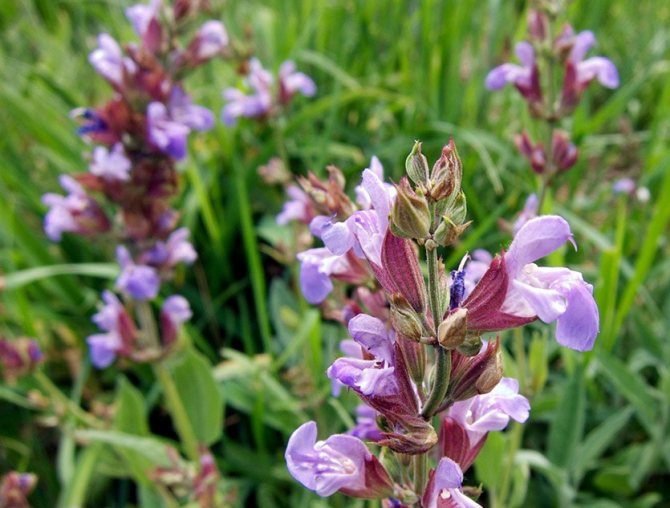

beautifulcataya /
In addition to good melliferous qualities, medicinal sage is also the best healer of its kind. Its leaves and flowers (containing the largest amount of essential oils among sage), possessing a delightfully spicy-fragrant smell, serve as a remedy against bacterial infections for colds, sore throats, tuberculosis, bowel disorders, skin lesions (a good cosmetic). Sage is also good for calming the nervous system, dental lobe, for the treatment of joints, liver and genital diseases, to reduce sweating. It should not be used in large quantities, as well as for pregnant women. Vegetable raw materials are dried in the shade at a temperature of + 35 + 40 ° C for 1-2 days. It is better to store it in glass, paper or woven containers, no more than two years. In addition, salvia officinalis is used as a seasoning for almost all types of dishes. Some hostesses place sage bags between the bedding in the closet.
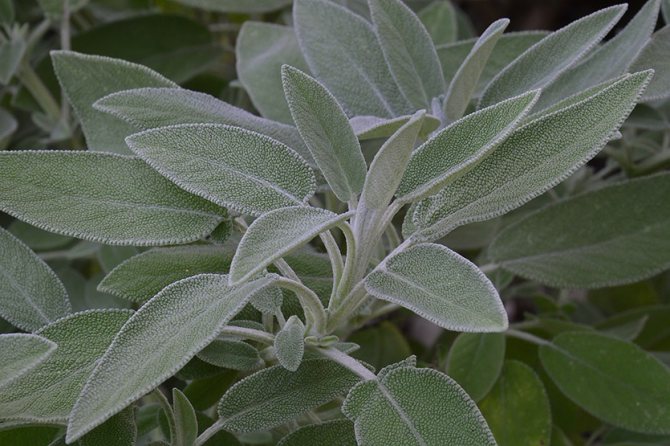

Irene Grassi /
Medicinal sage is thermophilic and drought-resistant, does not tolerate waterlogging. And with a strong drying out of the soil, it reduces the yield of leaves, which is necessary for less evaporation of moisture. When sheltered for the winter, it grows well in the Middle Lane. In the second year of life, its massiveness suppresses the growth of weeds. In the first year, the leaves are harvested in September, from the second year - twice a season (during the flowering period and in the fall before frost). For the winter, you need to cut or mow the plant in half, but not completely, otherwise the sage will freeze out. It can grow even in an apartment in a bucket, if you take it to a room (cellar, balcony) for the winter, where the temperature is 0 + 5 ° C. In industrial conditions of cultivation, it is not treated with any drugs against pests and diseases, so as not to reduce the quality of medicinal raw materials. But in principle, with the right choice of place for any type of sage, they practically do not get sick.
Sage meadow, or ringed (Salvia pratensis) is a meadow perennial with a simple, straight stem up to 70 cm tall. Leaves of various shapes: from rounded to spear-shaped, up to 15 cm long, with a jagged or slightly dissected edge, without pubescence. The spike-whorled inflorescence is decorated with blue, purple, pink or white flowers.
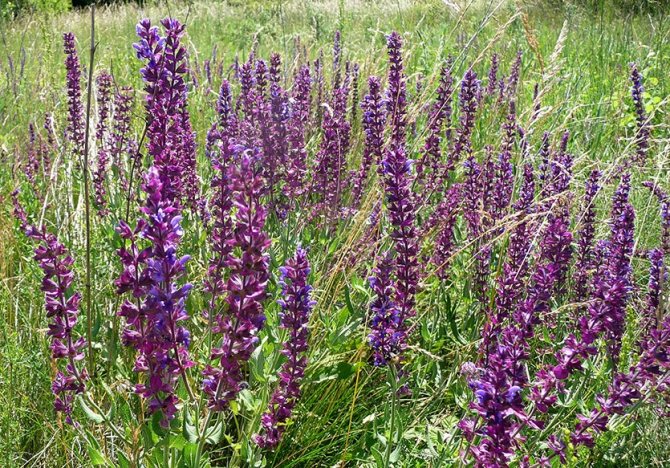

gailhampshire /
Blooms in late May - early July for 40-45 days. Honey productivity 100-250 kg / ha, in the south of the area up to 900 kg / ha. Nectar is often difficult to access, and meadow sage also gives bees pollination. Dried herb is added as a seasoning to food. Meadow sage has tonic, healing, antispasmodic, anti-inflammatory and other properties.
Quite not whimsical look. But like other types of sage, when grown in open ground in the Middle Lane for the winter, it is better to thoroughly mulch the bushes with straw with a radius of half a meter from the bush and 20-30 cm thick.
Clary sage, or broadleaf (Salvia sclarea) - meadow perennial or shrub up to 2 m in height (in the north of the range, biennial up to 1 m). Deep tap root, from which several straight, thick, wind-resistant stems depart, which is beneficial for bees to visit the plant. The leaves are large, wide, up to 35 cm long, cordate-wrinkled, large-toothed along the edge. Erect inflorescences occupy more than half of the stem, are hung with pink, white or lilac rather large flowers.
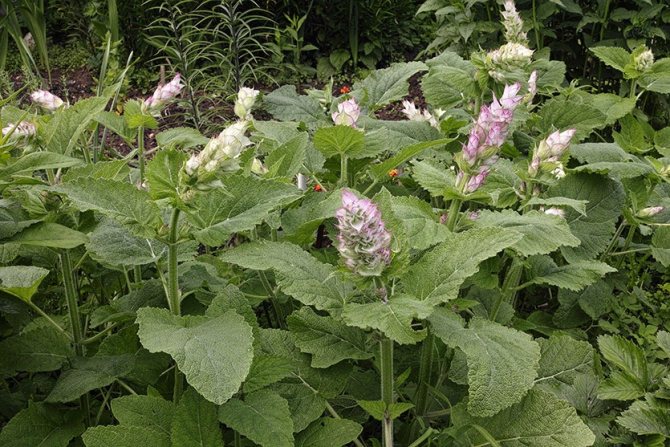

carlfbagge /
Seeds are brown, up to 3 mm.Blooms all summer through September. Honey productivity is up to 400 kg / ha, daily weight gain reaches 3-4 kg of honey per colony. High quality honey, very aromatic. Clary sage is used as an ornamental, tea and spice plant all over the world. In addition to the nutmeg aroma, it has healing properties for the treatment of rheumatism, colds, kidneys, psoriasis, improves brain activity and tones the entire nervous system. Used in perfumery.
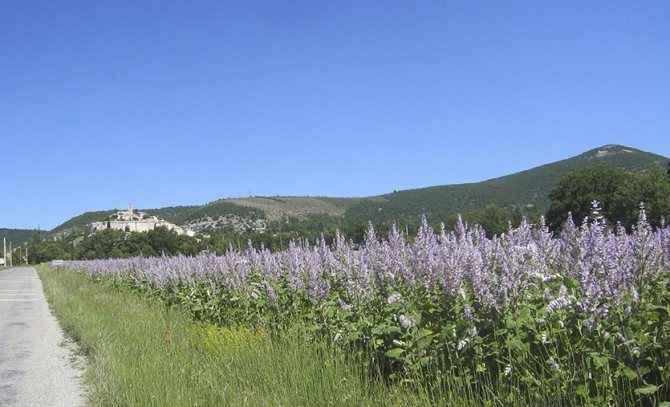

Jopa Elleul /
It grows on any type of soil, from clay to sandy-gravel, sometimes weed. Sage is sown before winter or in early spring in 60 cm aisles. The seeding rate is 6-8 kg / ha, the seeding depth is 2-3 cm. Seedlings appear in April - May, usually after 20-25 days, if the weather is favorable. After the development of 2-3 true leaves, thinning is done, leaving the largest shoots, three in a bunch for every 20 cm. Once a month, weeding and cultivation of row spacings are carried out, and in early spring overwintered stems are cut off.
Whorled sage (Salvia verticillata) - meadow perennial or shrub. Numerous stems up to 80 cm tall, sometimes branching, forming a wind-resistant bush. Leaves are cordate-elongated, up to 13 cm, crenate along the edge, pubescent. Lilac flowers densely surround the peduncle, forming a multi-storey structure of compact whorls. Corollas drooping slightly, which prevents rain from entering the flower. Bloom from June to September. Adheres to clay-limestone soils, in meadows, glades. One of the hardened types.
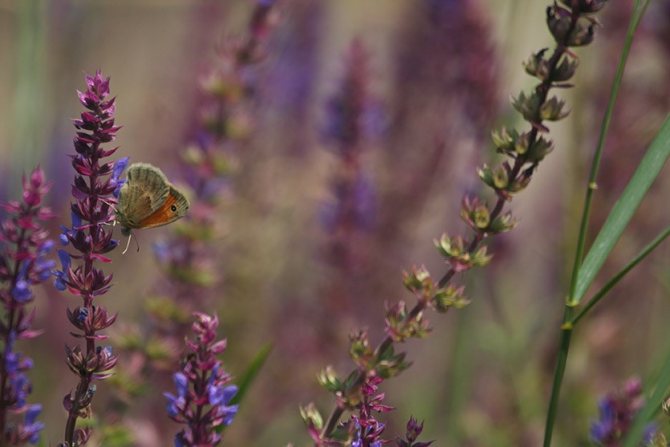

Wildlife Travel /
Bees actively collect pollen and nectar from it. Honey productivity is up to 300 kg / ha, on southern chernozems in warm, humid weather even 900 kg / ha, in the Non-Chernozem zone it gives only supporting bribes. Light amber honey. Whorled sage is a popular spice for meat, fish dishes and cheeses.
Sage is propagated by seeds, seedlings and dividing the bush. The purchased seeds are sown without soaking in sowing boxes with black soil or deoxidized peat (near-neutral pH) in March. It is better to add 20-30% sand to the fertile soil to loosen it. Planting depth up to 1 cm with good watering. Germination temperature + 20 + 25 ° С, it is good to cover the sowing box with glass for a greenhouse effect. Seedlings appear in 7-12 days. Seed germination depends on the storage period, usually 20-40%. After germination of the 3rd leaf, the seedlings dive. In May, a box with seedlings is brought out for hardening on a balcony, an unheated greenhouse for 2 weeks. In mid-May, you can plant seedlings in open ground in fertile soil. The place should be chosen on a hill, on a southern slope, well lit. Sage should not be planted in a low area where there is water after rain and cold air collects. Watering is moderate, once a week in dry weather. For sage sage, it is better not to add water than to pour it over. In spring it can be fertilized with compost, and at the end of summer with wood ash, which will also reduce the acidity of the soil. For the winter, they mow the sage in half and mulch, in the spring they cut it to the ground.
So, if you want to have a real natural pharmacy in your garden, drink medicinal teas with spicy honey, indulge yourself with exquisite spices, enjoy the scent of ethers, plant sage. Than you will delight not only the bees in the entire district, but also the neighbors with all sorts of aroma tones.
Sage varieties
Since this article mostly dealt with medicinal sage (vegetable), we will consider varieties that are suitable for different climatic zones and have excellent taste and irreplaceable medicinal properties.
Sage Breeze
This variety is included in the State Register of the Russian Federation, it is recommended for consumption fresh and dried (young shoots and foliage), it is used for the preparation of desserts, salads, soups, sauces, meat, fish. Plants of this variety reach about 60 cm in height, with erect shoots and dense foliage. The leaves are pubescent, toothed at the edges.In the second year after planting, the bush of the variety reaches about 280 g. Flowers are violet-blue. Seeds are small, brown-black in color.
Sage Aibolit
Like the previous variety, it is included in the State Register of the Russian Federation. It is consumed both fresh and dry. The plant is larger than the previous one, 60-120 cm tall. The leaf is dark green in color, finely toothed along the edge, wrinkled, has strong pubescence. It is customary to use the variety in the second year after planting, after a month has passed from the beginning of the growing season. But it is not as persistent in winter as the previous variety, so in the middle lane it is better to cover it for the winter.
Care features
Taking care of salvia is easy, since all the activities are traditional:
- Moderate watering, no stagnant water and soil loosening.
- Weed weeding. Their growth should not be allowed, as they are breeding grounds for diseases and pests.
- Timely feeding. At the beginning of growth, nitrogen is needed, in the future, organic fertilizers can be dispensed with. Plants respond well to mullein, infusion of green grass. You can also feed it with wood ash, rich in all kinds of trace elements.
- For the winter, salvia is covered with fallen leaves. In the area of risky farming, you will have to take care of more reliable protection from frost.
Diseases and pests of sage
Due to the presence of essential oils, plants rarely get sick. The only sore that can harm the sage during cultivation is problems with the root system. Most often, they are provoked by excessive watering or frequent rains. If mold does appear, the plantings are sprayed with a sulfur solution (strictly according to the instructions).
Thrips, spider mites and slugs are dangerous pests. But only if the sage is densely planted.
In landscape design
Sage is a plant with a wide range of uses. The plant is used not only in medicine, cooking, cosmetology and perfumery. Sage is widely used in landscape design due to the variety of color palette of buds. They can be yellow, red, purple, orange, pink.
Sage is grown in flower beds, ridges, on alpine hills. In combination with irises, hyacinths, tulips, aromatic herbs and cereals, original compositions are obtained.
Growing conditions
Perennial garden sage can be bred as annuals or biennials. Sage should be planted in an open, well-lit, sunny area. Slight shading of bushes is allowed. A heat-loving plant does not tolerate drafts.
The semi-shrub prefers light sandy loam or loamy, nutritious, neutral, breathable soils. He does not like slightly acidic soils. Their acidity should be: pH = 6.5 - 7.0. If necessary, you can use chalk powder, dolomite flour, eggshells. To make the earth loose, humus, compost, river sand are added before digging up the bed.
Note! Sage in the country can grow in one place for more than 8 years.
The culture does not tolerate excessive moisture. Do not use large amounts of humus. This can lead to the elongation of the bushes in height.
A favorable neighborhood is important for a plant. You cannot plant sage in the garden in the place where clear-flowered crops grew: mint, oregano, basil, thyme, corn. It is better that the predecessors were vegetables such as:
On a note! Irises, cereals, and strawberry bushes will be wonderful neighbors for sage.
Growing sage at home
Growing methods
Sage as a houseplant can be grown by planting seeds, seedlings, or material from dividing the bush in a flower pot.
The choice of capacity and substrate
For sowing seeds, it is better to use small cups for two or three seeds, and for seedlings, you will need a large container with a volume of about one and a half liters.The vessel can be either earthen or plastic.
At the bottom of each container, first of all, it is necessary to pour a drainage layer (expanded clay or pebbles), and then a fertile soil mixture. Experienced growers advise using a cactus substrate that is ideal for sage in structure.
Conditions of detention and care
- A window sill on the west or south side is ideal for growing sage at home.
- It is important to avoid sudden changes in temperature, cold drafts and frequent rearrangements of the plant to a new location.
- The potting medium should always be moderately moist. Heavy and frequent watering can lead to root rot.
- To maintain the required humidity, it is recommended to spray the plant with water at room temperature two to three times a month.
- For better tillering, crops need pruning of shoots once a month.
- Direct sunlight is contraindicated for sage, it is advisable to avoid them.
- Fertilization is especially important during the flowering period.
- The plant should receive adequate lighting for at least eight hours a day.
Sage in the country and at home on the windowsill is the beauty and riot of greenery, decorative adornment and medicinal raw materials. Try your hand and grow it yourself from seeds.
Reproduction
You can grow sage:
- dividing the bush. In the fall or spring, they dig up the plant, divide it into the required number of fragments. Places of cuts are powdered with charcoal. Small bushes should have aerial parts and roots.
- by cuttings. Cut off healthy branches of shrubs. They are lowered into a container filled with water. After the roots are formed, the culture is planted in the ground.
- seeds. This is the most popular method of breeding sage in the country, it is worth considering it in more detail.
Seeds are sown in February or March, early April. It depends on when it will be possible to transplant sprouts into open ground, summer residents should be guided by the local climate.
Important! Sage belongs to plants with long daylight hours. Therefore, it is necessary to highlight it with phytolamps.
Seed material is bought in a store or harvested in the fall from the bushes at their summer cottage. In the latter case, you need to prepare them for sowing: the achenes are kept for 30 days in the refrigerator. Before planting, leave in a pink manganese solution for 15 minutes and dry.
It is necessary to prepare the land in advance (5 - 6 days before planting). The soil should be spilled with boiling water with the addition of potassium permanganate or heated in the oven. This will destroy fungal infections, suspected pests. Next, you need to act like this:
- Prepare containers. They are poured over with boiling water, washed with laundry soap. Drainage - expanded clay is poured at the bottom. Then they spread the earth.
- Sage has very small seeds, so experienced gardeners recommend mixing them with sand. Then sprinkle gently on the soil surface and sprinkle with water from a spray bottle. Cover with glass or plastic wrap. Comfortable temperature for landings + 20-25 degrees.
- When the first shoots appear, the shelters are removed. The trays are put on the window. The crop should be watered sparingly. The first shoots appear after two weeks.
- The shoots dive when two leaves appear on each sprout (use the same land as when sowing). For a couple of days, the pots are left in a light (openwork) shade. This way they take root better. Then they are returned to a bright place.
Advice! In order for the bushes to be lush and give many lateral processes, you need to pinch their tops above every sixth leaf.
Growing seedlings
Seed preparation and sowing dates
To obtain friendly shoots, the seeds must undergo preliminary preparation. This can be stratification or treatment with growth stimulants.The effectiveness of stratification is possible only when the seed is kept in cool conditions (in the refrigerator) for two to two and a half months. To soak the seeds, you will need any growth stimulant (for example, Energen or Chlorella algae) and water at room temperature. The inoculum must be soaked for a day in a solution of two hundred milliliters of water and five drops of the drug, then dry and start sowing.
Favorable time for sowing is February - March.
Preparation of containers and soil
It is recommended to wash the landing container with laundry soap and then scald it with boiling water. Drainage is poured onto the bottom, and then the prepared soil mixture. It should have been light, loose, with good air and water permeability. You can purchase a versatile mix for low acid houseplants.
Features of sowing and conditions of detention
Seeds, pre-mixed with sand for ease of sowing, are randomly scattered onto a wet substrate and lightly pressed down. Crops are sprayed with a fine spray, covered with polyethylene and left in a warm and bright room with a temperature of twenty to twenty-five degrees until the first shoots appear.
After the massive appearance of seedlings, the cover is removed, the planting box is transferred to the southern windowsill and provided with regular moisture and additional lighting in the evening.
Pick and pinch
As soon as two leaves are formed on the seedlings, a pick can be carried out. Plants are transplanted into individual containers and placed on the sunniest windowsill.
It is recommended to pinch the top above the sixth leaf to form a more lush bush.
Sage in the garden: planting and care
Before planting sage outdoors in the country, the seedlings should be hardened for 14 days. It is necessary to take the plants out into the air so that they can get used to their habitat. To begin with, they are left for a few minutes, gradually increasing the time.
Young seedlings are planted when the threat of frost has passed (depending on the region, climate). For example, in the Moscow region, you can plant Salvia seedlings in the last days of May. So that the bushes do not interfere with each other, the distance between them should be at least 70 centimeters.
Planting seedlings in the ground
In early June, grown and hardened seedlings can be planted in the ground. Before that, already from the beginning of May, it can be taken out in the sun. The soil must be prepared in the fall, adding humus and mineral fertilizers to it: the earth should not be acidic. Add peat and sand if necessary.
Plants should be placed at least 25 cm apart. This scheme can be perceived as temporary. In the second year, sage can be transplanted individually along the paths.
Seedling care does not require special tricks: weeding, watering, once a decade feeding with liquid fertilizers, three times a season with mineral fertilizers. The planted seedlings need to be watered with warm water, you can - warmed in the sun.
Sage collection
Everyone knows that sage has undeniable medicinal properties. Both the leaves and the flower tops are beneficial. Medicinal material can be harvested throughout the summer season until the beginning of autumn. The best period for harvesting is considered to be the flowering time of the culture. The plant is harvested in dry, sunny weather.
You can pluck the leaves separately or cut the twigs, forming them into bouquets. For young seedlings (1 - 2 years old), it is advisable to take only the upper leaves, without touching the branches.
Medicinal herbs are dried in well-ventilated rooms (no more than +35 degrees). The sun's rays should not fall on it. The raw material is scattered in a thin layer or suspended in panicles. You can use an oven or electric dryer (permissible temperature 50 - 60 degrees). The dried plant is stored in glass jars, cloth bags, paper bags.
Harvesting and storage
The leaves are used for culinary and medicinal purposes. They are carefully plucked from the stem, starting from the bottom. It is not necessary to select too many leaves at a time, and it is undesirable to disturb the plant too often, for which the loss of vegetative parts is painful. You should take such a portion of fresh leaves, which is necessary for a single use.
The leaves are washed under the tap, dried in a warm, well-ventilated place. Drying takes a week. The dried raw materials are crushed, poured into glassware, and sealed with a lid. The spice is stored for no longer than a year.
Have you ever had sage tea?
Well no
Sage application
Interesting! It is used fresh and dried to flavor various meat, fish, vegetable dishes; it is included in complex spices. Also added during preservation.
For preventive, medicinal purposes, all kinds of decoctions, infusions, rinses are prepared from sage. It has an antibacterial effect, stops blood, improves vascular tone, cleanses the body. They treat wounds, burns, use it for compresses.
Sage is considered an excellent cosmetic product. Beneficial features:
- slows down the aging process;
- restores skin cells, cleanses, refreshes it;
- eliminates various inflammations on the skin, normalizes its fat content;
- rinse hair with sage infusion.
Sage is widely used in cosmetology
The plant also has contraindications. Its preparations cannot be used for the following diseases:
- acute inflammation of the kidneys;
- hypothyroidism (decreased thyroid function);
- polycystic;
- endometriosis;
- myoma;
- individual intolerance;
- pregnancy;
- breast-feeding.
On a note! The most common variety of salvia, which is planted in summer cottages, is Muscat sage (Voznesensky 24). It has a delicate aroma of nutmeg (the presence of essential oil 0.25%), for which it got its name. It is a perennial (usually biennial) plant. Differs in high winter hardiness. Its height is 1, 5 - 2 meters. If the crop is grown in the suburbs, the growth will not exceed 1m.
Clary sage is grown in the country in the same way as other types of salvia.
Sage is not difficult to grow in a summer cottage. It is easy to care for, and the beautiful look of the flower will decorate any garden.
22
Sage: characteristics and features of cultivation
Ornamental perennial sage (can be grown as an annual) is considered a rather unpretentious plant. It grows well both in the summer cottage and in natural conditions. In summer cottages, you can plant various varieties of cultivated sage. Many species of this medicinal flower are known. The culture is very popular due to its medicinal properties and the spectacular appearance of blue or purple inflorescences. In some varieties of sage, the inflorescences have a pink tint, there are also varieties with bright red petals. White sage is a rare species.
The Latin name for sage "salvia" is translated as "a flower that brings health." In ancient times, the plant was used to make incense due to its pronounced specific spicy aroma. If you plant sage vegetable, it will be used in the manufacture of spices at home. Sage is a real green pharmacy.
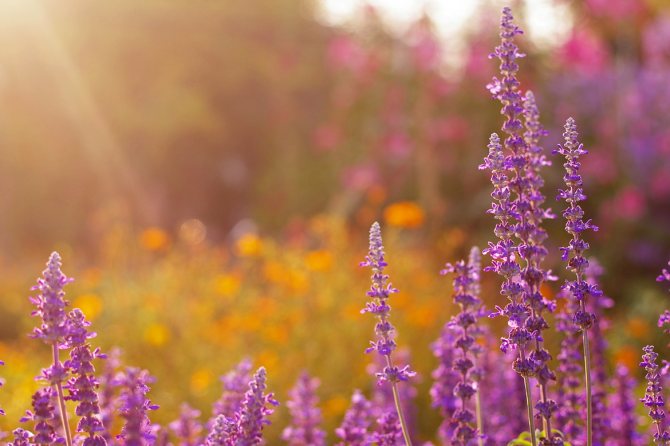

Sage
When planting, consider the following:
- This plant loves warmth. It is unlikely that it will be possible to grow sage in the Urals, in a cold winter. And even in the relatively favorable conditions of the Russian middle zone, sage does not always grow well. In the southern regions, sage is grown as a perennial plant; in northern climates, it lives for one, maximum two years. However, recently, some varieties have appeared that are suitable for cultivation even in Siberia. It tolerates cold well, for example, lemon sage.
- The acidity of the soil should be medium.
- The soil for cultivation should be light, preferably sandy loam. Perennial sage will not grow on heavy soils.
- Meadow sage loves bright sunlight, moderately moist soil, and moderate watering. The same can be said for the nutmeg look. But clary sage, on the contrary, grows well in the shade.
- Excessive soil moisture leads to deformation of the root system and subsequent death of the plant. The plant, especially mealy sage, tolerates drought well, worse - rainy and windy weather.
This flower prefers fertile soil rich in nutrients. Timely feeding will help to compensate for the deficiency of nutrients.
Important! If the plant is not fed, the salvia will grow poorly and the flowering period will be sharply reduced.
Getting ready for wintering
You, of course, did not forget to cover the roses on the site. Meanwhile, medicinal plants need your care and a winter coat. Many of the medicinal plants that hobbyists grow on their plots come from areas with far from similar weather conditions.
For example, lavender, medicinal sage and clary sage, lemon balm, fragrant rue, scumpia and hyssop originate from the Mediterranean, Caucasian dioscorea, madder and elecampane are found in the wild in the Caucasus, araliaceae (eleutherococcus, zamaniha, ginseng) Nippon dioscorea and Dalniy Maclea are genus East. The winters in those areas are very different from ours. How to help plants to endure the critical period? Even Siberian species, which endure the winter without problems, sometimes still present surprises, especially when long thaws alternate with a sharp cold snap.
For example, rue, phytolacca, lavender, bryony and some others are not found in the wild in the middle lane. It is better to shelter plants such as licorice and Ural licorice, the aforementioned bryony, American phytolacca and rue, madder dyeing, fennel, Caucasian dioscorea from the frost with peat. Even a non-southern plant like Hops will also respond gratefully to a blanket of peat or compost. To harbor or not to harbor lavender and sage is a moot point. Sometimes peat increases the likelihood of damping off and uncovered plants overwinter much better than covered ones. Plants such as monarda and lemon balm respond very well to a 3-5 cm layer of peat. But don't overdo it. With too much cover, the likelihood of damping out increases dramatically.
You can paddle the soil a little to the rosettes of perennial foxgloves (ciliate, large-flowered), their rosettes rise with age and this does not contribute to a good overwintering.
Far Eastern exotic species such as Aralia, Zamaniha and Eleutherococcus do not need shelter, but in no case dig the soil around them, even pull out the weeds without being zealous with a hoe. Their root system is superficial and it is not worth worrying about it, especially before a serious cold test. You can sketch a layer of dry leaves around. Securinega usually freezes by the level of snow cover, but you should not be afraid, in the spring it will grow out of dormant buds.
And in general, Far Eastern plants suffer more not even in winter, but from late-spring frosts, which damage not only flowers, but also blossoming leaves and shoots that have begun to grow. This greatly weakens the plants, as they say, not to fat - to be alive. But adding a few buckets of peat would not hurt.
Cover with spruce branches of skullcap, clary sage and chicory. Mice are very fond of chewing their roots at their leisure.
Peat can be poured onto madder according to the principle the more, the better - 10-12 centimeters. She not only overwinters better, but the root harvest for the next year is much better.
Consider one more point: if in the south lavender can grow for 20 and 30 years, lemon balm and sage 5 or more, then in the Non-Black Earth Region these plants winter worse and worse as they age, the roots gradually turn out to be closer and closer to the surface, therefore it is better do not forget to update your small plantation in time and always keep an emergency supply of seeds.
Skumpia leather purpurea
Some plants, for example, witch hazel, are better to be bent to the ground and pinned down with a slingshot (as sometimes roses are covered). But the scumpia, despite its very southern origin, I do not harbor, it usually hibernates and so.Although the Dutch red-leaved forms are often naughty.
Also, before the ground is frozen, dig grooves to drain excess moisture during thaws and in spring. If, during a thaw, a layer of water accumulates over the plant, and then freezes, then even hardened plants of Siberia and unpretentious inhabitants of our climate cannot withstand this.
All about planting medicinal sage
The sage cultivation technique is simple.
But in order for the bushes to please you with generous flowering and active growth rates, you will need to systematically follow some simple rules.
The cultivation of medicinal sage will be successful if you remember that the plant:
- does not tolerate excessive moisture, is highly drought-resistant;
- does not tolerate frost, loves warmth and light;
- grows better on soils with high aeration characteristics;
- will require the provision of a sufficient amount of space, since it has a massive root system;
- will require systematic weeding and loosening of the soil;
- needs to provide high-quality drainage when grown in greenhouses;
- prefers soil with neutral pH;
- for normal development, its bushes need periodic introduction of fertilizers;
- the distance between the beds should be at least 50 cm, and between the bushes - 30 cm;
- the culture will thrive in the area where cabbage, potatoes, onions or legumes grew before it.
General description of the culture
To many gardeners, sage is known as salvia. It is a perennial herb, or shrub. Most of the salvia varieties are annuals, since the thermophilic plant does not tolerate frost. Nevertheless, some of the species are successfully cultivated as perennials and, with proper preparation for the cold period, winter well in the conditions of the Moscow region and central Russia.
Sage roots are located in the top layer of the soil... The stems of the plant are tetrahedral. They are erect and rather high, their tops can rise above the ground at a level of 1.2 m.The shoots of salvia are densely covered with wedge-shaped or ovoid bright green foliage, the length of which is 4 to 8 cm, and the width is from 1 to 3 cm. bright flowers are collected in inflorescences that resemble spikelets or panicles.
Flower shades range from red to deep purple. Sage begins to bloom in mid-summer and continues until late autumn.
Sage (salvia) clary: description
Sage (lat. Salvia sclarea) is a perennial herbaceous ornamental and medicinal plant of the labiate family. The shrub grows mainly in the tropics and subtropics around the world. About 700 of its species are distributed on different continents, two of which are recognized as endangered. Clary sage is cultivated in Europe and America. In culture, Muscat Salvia is a two-year-old herb.
The name of the plant supposedly comes from the Latin word salvus, which means unharmed, healthy. Therefore, sometimes sage is also called the herb of health, and clary sage is called the eye of Christ.
This shrub grows within a meter. Blooms from early summer to September, throughout the month. Violet, pink or white fragrant flowers are collected in paniculate inflorescences 40 cm high. Fruiting in August-September. The inflorescences and leaves contain a large amount of essential oil. The sage has an astringent taste, the aroma is strong, sharp, bitter.
Did you know?
The essential oil of some types of sage is used in pharmacology - for the aromatization of drugs, as an astringent, antiseptic and in folk medicine - for the treatment of diseases of the kidneys, oral cavity, digestive system, inflammation of the eyes, for the prevention of respiratory infections. Sage is also an aphrodisiac.
Care
Sage is not picky, easily tolerates short-term drought, and can grow even on depleted soils.Caring for him in the open field does not cause much trouble. But to increase decorativeness, you will have to perform agrotechnical actions:
- watering;
- remove weeds;
- feed;
- trim;
- protect from diseases and pests.
In the spring, until the plant begins to bloom, it is fed with nitrogen fertilizers. Such dressing will contribute to the growth of greenery. In the fall months, sage needs phosphate-potassium fertilizers to help perennial crops survive the winter.
Perennial varieties grow quickly - during the growing season, the sprout increases by 30 cm. To improve the health of sage bushes, they are transplanted once every 5 years.
The plant needs shearing and pruning. This will make it possible to grow lush and abundantly flowering bushes, on which new shoots will quickly appear. The haircut is done in the spring and fall months, sparing no branches. The more shoots are removed, the more luxuriant the bush grows. All lignified shoots and inflorescences that have grown should be cut off from the sage. The first rejuvenating pruning is carried out in the second year, leaving at least 10 cm above the ground. In the fall, before the winter shelter, the bushes are cut to the ground.
All sage species do not tolerate winter well and need good shelter. When the temperature drops too low, the surface around the bush is mulched. At a temperature of 5-6 ° C, a shelter is made of spruce branches. If the winter is not very snowy, it is better to sprinkle the plants with a layer of earth.
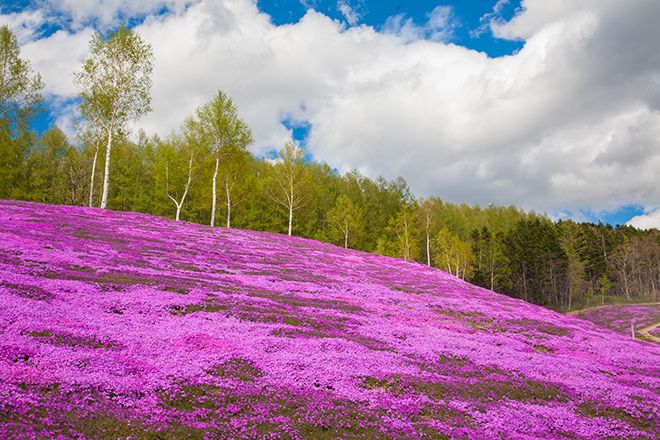

How to plant clary sage (salvia) clary
If you are already determined to get clary sage in the garden and are thinking about how to plant it, then you will not have any difficulties either. The plant is propagated in two ways: seed and vegetative. Let's take a closer look at each of them.
Features of growing sage seeds: when, where and how to sow salvia
Sage is predominantly grown using seeds. With seed reproduction, planting is possible in several ways:
- self-seeding;
- autumn sowing;
- spring planting of seedlings;
- spring seedless method.
The most optimal time for planting clary sage is autumn, then we grow it from freshly harvested seeds.
To obtain seed, the most developed and healthy plant of the second year of life is left.
When the seeds are 70-75% ripe, the inflorescences are cut and hung under a canopy for ripening, while litter or paper is spread below. It is important not to miss the moment of seed ripening, otherwise they tend to quickly spill out. After extraction, the seeds are dried and cleaned of impurities using a sieve.
At the end of October - at the beginning of November, 8-10 days before sowing, the soil is well dug up, removed from weeds, humus or compost (1-2 buckets / m2) and phosphorus-potassium fertilizers (20-30 g / sq. m). Then they start sowing. Seeds are sown in holes to a depth of 1.5-2 cm.A distance of 45 cm is left between the rows.
Important!
The seeds should not hatch until frost, otherwise the plants will die. Therefore, it is important to guess with the sowing time - it is better to spend it before the first frosts.
In the frosty ground, the seeds will grow stronger. With the onset of a stable spring temperature of + 10-12 ºС, a quick emergence of seedlings can be expected. Thickened crops will need to be thinned out, leaving intervals of 8-10 cm.
Clary sage, except when grown from seeds, can be propagated using seedlings. In this case, at the end of March, the seeds are pre-soaked in warm water, germinated for several days. Then they are sown in separate pots, plastic cups or a container with a universal substrate for seedlings to a depth of 1 cm. The crops are covered with glass and placed in a warm, well-lit place. Seedlings appear within a month. When the first leaves appear, the glass can be removed. Seedlings should be thinned and hardened.
To do this, take out to fresh air every day, starting from 1-1.5 hours, gradually increasing the time the sprouts stay in the air by half an hour. At the end of May, they can be planted in a permanent place in the garden. For this, a two-line method is used. 15-20 cm are left between the lines, 50-60 cm between the ribbons, 20 cm between the shoots.
When planting in spring using the seedless method, seeds are placed 6-10 days before the expected day of planting in a container with wet sand (in a ratio of 1: 2). The container is placed in a humid room with a temperature of + 20-25 ºС. After the appearance of white sprouts, they are planted in open ground to a depth of 2-4 cm. The distance between rows is 30-45 cm. The beds are covered with foil. The aisles are periodically weeded and loosened.
Vegetative breeding method for sage: how to propagate a plant by dividing a bush
At the end of summer, sage bushes can be divided. To do this, the roots are dug up and cut off with a knife or shovel. The rhizome is treated with a fungicide. Young plants in the first year of life before the winter period require shelter.
Secrets of growing medicinal sage: how to care for a plant
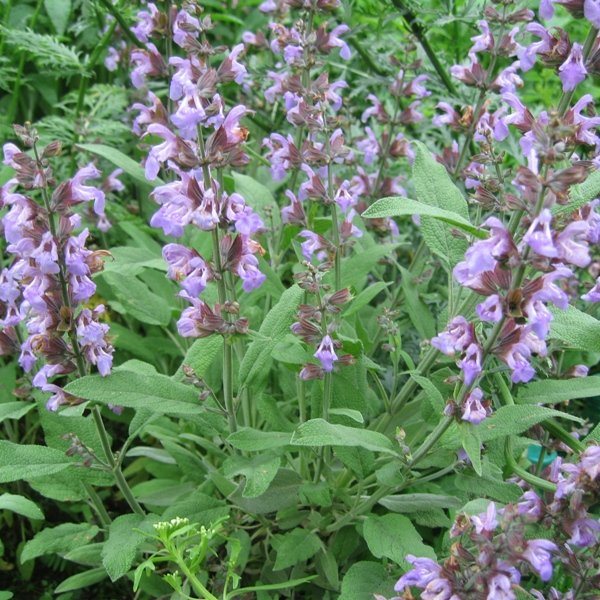

Sage is unpretentious, drought-resistant and able to survive on poor soils.
However, growing in harsh conditions does not reduce the decorative characteristics of the culture and its medicinal potential. If you are not too lazy and create good conditions for the bushes, then the plant will surprise you with its intensive development rate and abundant flowering, especially since this will not take a lot of time and effort from the grower. High-quality watering, systematic loosening, weeding and pruning of bushes - this is almost the entire list of the most important agrotechnical manipulations that you need to perform if you want to get beautiful and cheerful bushes.
Insufficient watering is the main reason that the leaves on the crop become too hard. Excess watering is considered no less destructive for sage. Excessive moisture attracts snails, spider mites, thrips and slugs to the bushes. Regular thinning and pruning of bushes will ensure that they receive a sufficient amount of ultraviolet radiation and will serve as a guarantee of their normal growth and development. Equally important is the correct preparation of the bushes for wintering, which will protect them from freezing.
Winter crops in November
A very hot season awaits us in the spring. But we can unload ourselves a little by sowing some of the plants before winter. I think that many gardeners and gardeners have used this technique more than once. This sowing time has both pros and cons. So let's try to figure out "what is good and what is bad."
Let's start with the fact that for some plants this is the ability to just get seedlings - for those whose seeds are in a state of deep physiological dormancy and will not germinate for several months without cold exposure. Such fastidiousness includes yellow gentian, barberry, hawthorns and some other woody and shrubby plants. If you are a fan of growing seedlings of fruit trees on your own, then you can sow an apple tree, a pear to get seed stocks.
Some plants, for example, all aralia plants (eleutherococcus, aralia, zamanihu, ginseng), as well as wild garlic and adonis, had to be prepared in advance for cold immersion for 2-3 months by warm stratification at room temperature. Of course, you can keep them in the refrigerator for 5-6 months and sow them in the spring, but there the seeds often grow moldy, they need constant supervision and, if necessary, treatment against mold, most harmlessly with a solution of potassium permanganate.
For some plants, this is the ability to get earlier shoots... Having prepared the beds in advance and cut the grooves, in early November, when the soil freezes, you can sow dill, parsley, parsnips, lovage, coriander, tricolor violet, elecampane.
Planting a plant
Different types of sage are ambiguous about equal conditions. Oak and meadow prefer sunny areas and moderate watering. These are drought-resistant plants for which waterlogging is dangerous. Clary sage naturally lives on the edges of the forest, so light shade and moist soil are of the highest priority for it.
Despite the differences, there are general requirements:
- salvias grow more readily on light sandy loam soils;
- prefer humus-rich soil of normal acidity (pH = 6.5);
- require shelter for the winter;
- need spring pruning.
Sage is very thermophilic, so it needs to be covered well for the winter.
Since sage is a thermophilic plant, some perennial species are grown as one or two years in regions with harsh winters.
Important! Sage is a cross-pollinated plant, therefore, to preserve species characteristics, different varieties are planted at some distance.
Useful information from gardeners
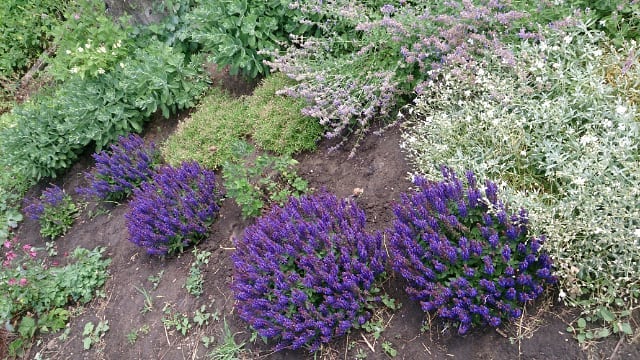

Carefully choose a place for planting sage and it will delight you with its flowering for up to 8 years
There are several important issues to be addressed before boarding. It depends on how long the salvia will grow. In one place, she can be up to eight years.
Seat selection
It is required to choose the sunny side, where the light soil is located. Even on rocky or sandy ground, sage will do well. But in the presence of clay, it will not be able to grow normally.
Sage is usually unpretentious. Therefore, it is sufficient to provide a good drainage system so that it can grow without additional maintenance. But it is recommended not to forget about the flower. With proper care, the buds will be brighter and more beautiful.
It is necessary that the roots do not suffer from lack of air and excess moisture. Otherwise, they will begin to rot, and the plant itself will die.
Plant sage in a place where there is more sun, then it can reveal all its beauty.
Lighting requirement
Planting in the shade will not destroy the plant. However, it will not allow him to reveal all his beauty. Therefore, it is recommended to choose southern areas where there is no shade. The rate of development of sage directly depends on the air temperature outside and sufficient illumination.
If the flower is in a pot, it needs to be provided with maximum rest. It is not recommended to transfer it and transplant it again. All this causes stress, which affects the rate of growth and flowering.
Additional Information
Planting a plant will be successful if you remember a few important nuances:
- sage tolerates drought well;
- the plant does not survive at low temperatures;
- a lot of space is needed, since the flower does not have a highly developed root system, therefore, weeding is required regularly;
- for rapid growth and strong flowering, fertilizers must be used;
- the distance between the bushes should not be less than 30 cm.
If potatoes, cabbage or legumes grew on this place before sage, then there should be no problems with the necessary minerals. It is possible to do without feeding at first. However, it is recommended to use organic fertilizers to obtain the desired fast effect.
Disadvantages of winter sowing
But now about the cons of this sowing period. The weather conditions in winter and spring are different, and sometimes the abundant snow begins to melt so actively that even with a slight slope it can simply wash off the seeds. The second danger is mice and birds, which also want to eat, and in the absence of snow for a long time or its periodic melting with exposure of the soil, the seeds are in their reach. Of course, this does not threaten all seeds, but, for example, leuzea and agaric may suffer. And the third danger - you can simply lose the seedlings - by the spring, the exact place of sowing and rows is often forgotten.
There is a little trick in this case.If there are few seeds and seedlings do not appear together, then it is better to sow in pots with labels and dig them flush with the soil on the site. I used this technique for Rhodiola rosea, wild garlic and duck peony.
Preparation of planting tanks, drainage and soil
If the seeds for planting are ready, you should carry out a few more preparatory procedures that will help you grow a healthy and strong plant at home:
- The correct choice of landing capacity. Purchase a container made of durable plastic. The planting depth of the container should be 30-35 cm. The optimal length for the container is not provided, the choice depends on the length of the window sill. Width not less than 20 cm.
- At the bottom of the container, holes with a diameter of up to 4-5 mm should be evenly spaced to drain excess water. Such holes will help to avoid the accumulation of fluid in the root system area. Holes can be made with a hot awl. This method will help not only create holes, but also expand existing ones.
- Sage should be planted in light colored plastic containers. The planting capacity of dark colors will attract the ultraviolet rays of the sun, which will lead to overheating of the soil. Overheating of the soil has a detrimental effect on the root system of any plant.
- Drainage is an important component when planting sage, as the root system weakens when there is a lack of air and rots when water is retained. The drainage layer is 1-1.5 cm.
Tip # 2. Planting containers or pots are disinfected with a weak solution of potassium permanganate. Thoroughly disinfect the inside of the container before laying drainage material and soil.
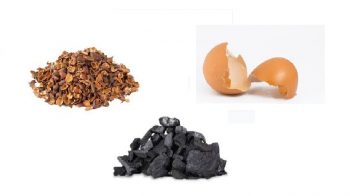

Do not use shells of nuts, eggs or charcoal as drainage. In 85% of cases, they cause the development of putrefactive root diseases.
The optimal materials for creating drainage in sage planting containers are presented in the table:
| Materials (edit) | Drainage features of the material | Note |
| Expanded clay | Improves breathability and water permeability Absorbs a small amount of water and releases it to the roots when the soil dries Water does not stagnate in the roots of the plant due to the round shape and smooth texture Does not make planting containers heavier | Use as topsoil protection. Reliable protection against drying out and the formation of a dense, hard crust. Service life 5-6 years |
| Ceramics | Improves breathability and water permeability Prevents the formation of mold and root rot Reduces soil acidity Protects the root system from waterlogging | When using ceramics as drainage, it is recommended to mix with sand so that the sharp edges do not harm the sage roots. Service life 2-3 years |
| Gravel and crushed stone | Improves breathability and water permeability Long lasting, does not collapse Prevents the formation of mold and root rot | Heavy, adds significant weight to planting containers. Poor heat retention. When grown on a cold windowsill, the root system can suffer from hypothermia |
The soil should be loose, which means water - breathable. Free of inclusions such as vegetation and clay lumps. Mix the soil with sifted sand. The amount of sand should be no more than 10% of the soil mixture. Instead of sand, granular perlite can be used in the same amount. For balanced mineral enrichment of the soil, it is recommended to mix it with ready-made peat soil in an amount of 5-10% of the total mass of the soil mixture.
Sage. Description and useful properties
Sage is a perennial bush with a straight stem, narrow pointed leaves and small, spike-like inflorescences. Sage blooms in the first half of summer. The plant is unpretentious, easily tolerates frost and summer drought.
The plant is rich in tannins, essential oils, vitamins, phytoncides and mineral salts.It is recommended to use it for pneumonia and tuberculosis, bleeding and rash. Sage helps to cope with diseases of the throat, kidneys, stomach and intestines. In addition, it reduces the activity of sweat and mammary glands, stops inflammation and relieves pain.
Sage has also found its use in cooking. It is used in any form as a bitter and pungent spice in small quantities. It is added to various sauces, salads, meat, poultry and fish dishes. Sage leaves are used to make cookies and some spicy drinks.
For medical purposes, infusions, compresses, lotions are made from sage. It is added to baths and inhalations. There is sage toothpaste that has astringent properties.
In addition to medicinal sage, there is also. In medicine, its leaves and inflorescences are used. The healing abilities are very similar to. Agricultural technology is the same.
It's not difficult at all. Even a novice gardener can handle this.
Landing nuances
To figure out how to plant medicinal sage, you need to get acquainted with the varieties of this plant.
Oak sage
Propagate oak sage by seeds, cuttings, aerial shoots and dividing the bush, but the second method is possible only in the southern regions of the country. Since in nature this plant grows in forests and on the slopes of hills, you need to choose a well-lit area for it in the garden.
Also, when planting, it should be borne in mind that this type of sage grows strongly, so it is necessary for it to leave space in reserve.
Most often, such sage is propagated through seed cultivation. This method can be realized by sowing seeds directly into open ground or by first growing seedlings at home. You can sow seeds from March to June. Sprinkle the seeds with sand, moisten and cover with foil. When the germ leaves open, the cover must be removed.
Perennial
Perennial sage is grown in the country, also in a well-lit place. Before planting, it is advisable to fertilize the soil with manure, compost or humus. In this case, any manure must be diluted with water before use.
The plant is a small bush, therefore, in the case of a group planting, it is necessary to leave room for each plant. If the seedlings are too close to each other, then it is better to thin them out.
Dobrynya
The cultivation of the Dobrynya variety is no different from the cultivation of other varieties of sage. Moreover, this variety is considered more resistant to drought, pests and diseases. The growing season from the beginning of regrowth to flowering is 50-52 days, from full regrowth to the last collection of the leaf - 130-160 days.
Kubanets
Sage Kubanets is a branched shrub, the height of which is 69-73 cm. It is also planted in several ways. In the first year, only 3% of the plants bloom, in the second - 99%. The variety is resistant to winter cold and drought, practically not damaged by scoop caterpillars.
Sage bloom
The flowering time of a crop depends on its varietal affiliation. However, most often flowering lasts from July to August. But there are also varieties that bloom from late summer to late autumn. Sage inflorescences are spike-shaped, purple, purple, pink, blue, white and red.
Many sage varieties are honey plants. During flowering, the plant exudes a pleasant honey aroma. After flowering, seeds are formed, which are later used by gardeners for plant propagation.
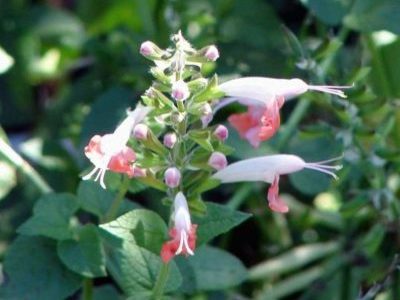

Wintering
There are two ways to ensure the wintering of sage:
- In the southern regions of Russia, it is possible to leave roots in the ground. But it is necessary to cover the cut flower with a film or bottle. This method of ensuring safety is relevant if the air temperature does not drop below -10.
- In the rest of the country, the root is dug up. It must be rinsed and residual soil removed. You also need to prepare a box in which the flower will be stored.It is recommended to use sawdust or mulch for preservation.
Preparing for winter and hibernation
Almost all types of sage do not tolerate prolonged frosts with little snow. To prepare the plant for wintering (in time this is the onset of stable cold weather with subzero night temperatures), you need to start with pruning: all shoots are cut to the height of the soil, under the stump. The plant is covered with mulch (dry humus). In this case, all root growth points must be closed. After stable frosts with a temperature of at least 5-6 degrees, sage should be covered with spruce branches or the remains of garden plants.
In winter, be sure to keep an eye on a good snow shelter; in winters with little snow, snow should be added. The shelter can be removed in the spring only after the return frosts have ended; this should be done gradually, carefully monitoring the night temperatures. Delicate young shoots of sage, warmed up in the daytime sun, can freeze at night in sub-zero temperatures.
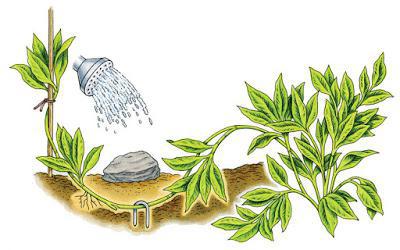

Diseases
Sage - a medicinal plant, therefore it is considered an excellent insecticide. However, he is susceptible to certain diseases.
Therefore, you need to take certain actions to save the flower, after detecting signs of the disease.


| Disease | Short description |
| Rust | Dense brown teliosorus appear on the underside of the leaf. The leaves begin to turn yellow and fall off. It is necessary to remove the affected areas so that the flower does not die. |
| Black root rot | The roots are covered with bloom and gradually turn brown. In case of severe damage, the plant dies. It is necessary to use fungicides to fight the fungus. |
| Root rot | The lower part of the stem darkens, rot and plaque gradually appear. It is possible to fight this disease with solutions of fungicides. |
Interestingly, parasites rarely infect sage. If for some reason they decided to feast on it, then they themselves will leave after a while. You don't have to do anything on purpose.
Thus, sage is an excellent perennial plant that can delight with its inflorescences for up to 8 years in the southern regions. In other regions of the country, it is used for no more than two years, after which a new one is planted. It is possible to plant it with seedlings, but it is better immediately in open ground. With proper care, sage can give large and beautiful buds that will bloom for quite a long time.
When to harvest sage?
Sage is harvested both in summer and autumn.
Summer harvest usually begins in the 3rd decade of June, when the inflorescences bloom. During this period, sage contains the most essential oils, so the plant is suitable for medicinal purposes, and for cooking - as a seasoning. Intact shoots with foliage, as well as buds, are dried. Sage is harvested until mid-July.
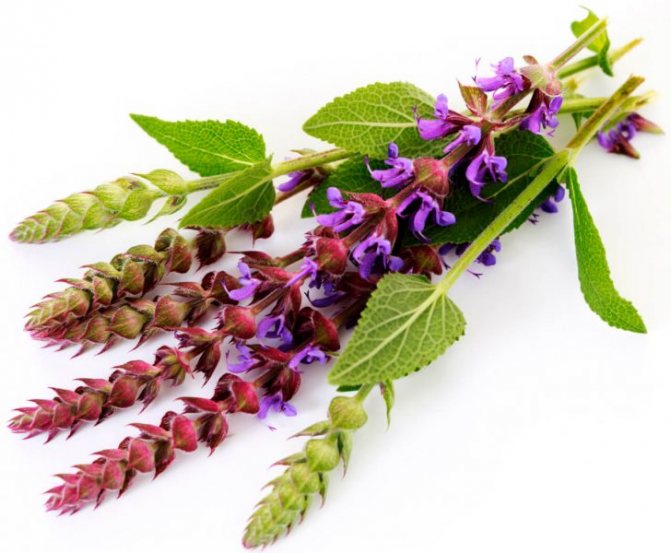

In autumn, the collection begins from the end of September, and it lasts 2-3 weeks. By this time, the greenery is growing again on the cut bushes, which is used.
Sage in summer and autumn - only need to be harvested during dry weather.
Rules for pruning medicinal sage
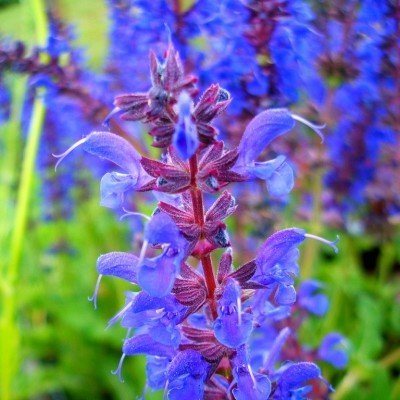

Sage bushes need systematic pruning and shearing.
If you refuse to carry out this manipulation, then the plant will very quickly stretch in height, become naked, take on an untidy appearance and age. Systematic pruning stimulates the intensive formation of new shoots and will contribute to increased bushiness of pets.
After the culture has faded, all dried inflorescences are removed from it. In the spring and autumn, the shearing of the bushes is mandatory. Do not feel sorry for the plant when pruning, since the more you cut, the more young shoots are formed on the pets. All lignified shoots are also subject to removal.
Shrub sage in landscape design
One- or two-year-old hybrid varieties of sage, such as brilliant salvia or clary sage, are most often used in garden design. Nevertheless, perennials are often used to create mixborders, flower beds, flower beds.
A common use of perennial sage is to create a spice garden or aroma garden. A classic example of Salvia's neighbors on such an island:
- peppermint and apple;
- creeping thyme (thyme) and lemon;
- oregano and hyssop;
Sage in landscape design
- basil and rosemary;
- parsley and cucumber herb;
- chives and leeks.
Practical use of sage has earned him the fame of a garden healer. Essential oils and a varied composition of trace elements help in the treatment of lung diseases. In aromatherapy, sage is considered one of the most powerful sedatives. The plant is widely used in cooking as a spice. Growing perennial species in the garden guarantees health and good mood.
Shrub sage: combination with other plants
Light airy spikelets of sage go well with large heads of noble flowers. The wide blue-violet palette creates a gorgeous backdrop for warm shades of reds, yellows and oranges.
Sage in a common flower bed
- the combination of sage with chrysanthemums, roses, lilies is used in the design of classic gardens;
- bulbous - irises, daylilies, tulips, hyacinths in the company with sage will add charm to the alpine hills;
- for landscape design in a rustic style, varieties of oak sage in combination with cereals and herbs are irreplaceable.
Sage infusions
Sage infusion is recommended for nursing mothers to drink if they wish to wean the baby from the breast. It is used as a lotion for eczema and burns, and is also taken orally to treat the liver and gallbladder.
Infusion of sage leaves to stop lactation
To prepare an infusion of sage to stop lactation, you should take 1 teaspoon of dry plant leaves and pour 200 milliliters of boiling water over them.
Then the agent must be insisted for an hour, strain and take 50 milliliters four times a day for a week.
Sage alcohol tincture
This remedy can be taken for rheumatism and periodontal disease. Before use, the tincture should be diluted with water. Also, it is consumed inside for 1 teaspoon for a month with atherosclerosis.
To prepare it, you need to take 500 milliliters of vodka and pour them 3 tbsp. tablespoons of dry raw materials. The product should be infused in a dark place for two weeks. After that, it must be filtered and used for its intended purpose.


Reproduction of culture
Florists propagate oak sage and other varieties in various ways. The easiest way to propagate a flower is by cuttings. To do this, cut the partially hardened shoots into 15 cm long cuttings and place them in a container of clean water. Just do not expose a bunch of cuttings to direct sunlight. You can put the workpieces on the window or on the table near the window. The cuttings will soon develop roots. After about 14 days, cuttings can be safely planted in open ground. Soon they will become a real decoration of the flower garden.
You can also propagate sage by dividing the bush. This is usually done in the last decade of August - early September. The flower has a well-developed rod-shaped root, and usually the division of the bush takes place without problems. Next, the cuttings are planted in a pre-selected place. The plant easily tolerates this interference and does not suffer. This procedure is best tolerated by oak sage.
Sage can be grown from seeds. This requires:
- Sow seeds purchased or harvested by yourself in containers. This should be done in the last decade of February - the first decade of March.
- After 14 days, seedlings will appear, and after 21 days, it is necessary to move the seedlings into pots filled with peat and nutrient mixture.
- Then the seedlings are planted in open ground.
- In order for the plants to adapt faster, they need regular watering, followed by loosening of the soil.
In the southern regions, sowing seeds in open ground occurs in the last decade of April, in the northern regions - in the second decade of May. In any case, you need to do this when the threat of night frosts has passed. In order for the seeds to germinate well, you need to hold them in a solution of a drug that stimulates intensive growth before planting. But this should only be done if the gardener has decided to sow sage in the spring. During the fall sowing campaign, the seeds must be completely dry. Autumn high soil moisture, in combination with wet seeds, can cause the death of the plant. Seeds are sown to a depth of 5 cm, the gap between two furrows should be at least 15 cm. This method of reproduction is more laborious than others.
Note! The most unpretentious variety is variegated sage. It grows well in the Moscow region and to the north.
Seeds can be purchased in specialized stores or prepared on their own. Before buying them, you should definitely pay attention to the expiration date: an expired product may have poor germination. Cuttings are also harvested independently or purchased in a nursery. It is advisable to purchase plant varieties that are regionalized for a specific region. Most varieties suitable for cultivation in southern climates have been zoned for the middle lane.
What kind of soil does medicinal sage like?
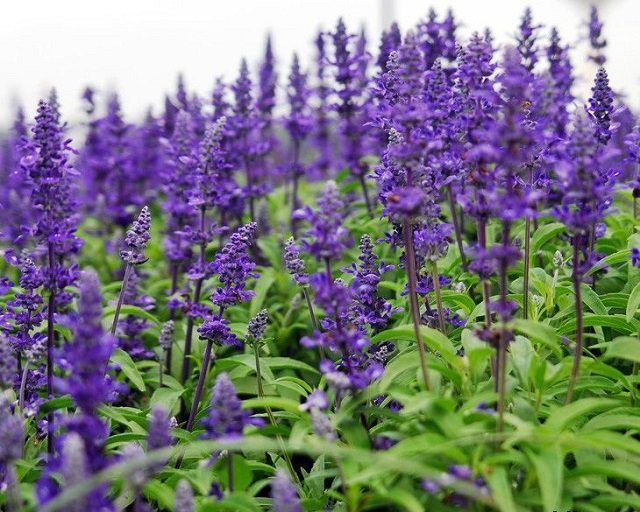

The planting and care of salvia officinalis should be especially attentive.
The culture grows well on sandy soils. However, if clay soil prevails on your site, then during the autumn processing of the beds to increase the aeration properties, it is covered with river sand, humus and carefully dug up. When applying humus, the main thing is to observe moderation, since its excessive introduction will negatively affect the development of the bushes.
Remember that in areas with increased fertility, there is increased vegetative growth of salvia, which can lead to excessive stretching of the plants. At the same time, the intensity and quality of flowering of such plants is significantly reduced.
Sage growing from seeds
Seed propagation is performed in the spring, in a previously dug and fertilized bed. To do this, the seeds are deepened into the ground by 3 millimeters, leaving 30 centimeters of free space between them. After planting, the garden is watered.
Sage will begin to sprout in a month, after which it will need to be thinned out, leaving only healthy and viable plants.
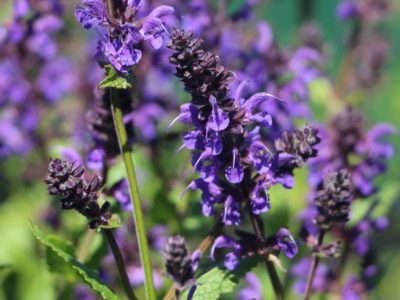

Preparing sage seeds for growing on a windowsill
Before you start propagating sage seeds, you should familiarize yourself with some of the procedures for preparing seeds:
- selection;
- soaking;
- disinfection;
- bubbling.
Seeds for propagation are used only the largest, regular shape, without defects and mechanical damage to the texture. The seeds are soaked to soften the dense shell. The seeds are placed in a tissue bag and immersed in warm water for 10-12 hours. This procedure allows you to get a high percentage of seed germination.
Disinfection of seeds is carried out to eliminate any infectious pathogens that may have gotten into the collection of seeds from the mother plant. The disinfection procedure proceeds by means of a solution of potassium permanganate, which is diluted in a ratio of 1 g per 1 liter of water. The seeds are kept in the solution for 15-20 minutes, then washed with clean water.
Tip # 1. Disinfection of seeds is not recommended without a soaking procedure, since dry sage seeds can be burned even with a weak solution of potassium permanganate.
Sparging is carried out to increase seed germination. It is advisable to carry out bubbling if the seeds were stored for a long time before planting and there is a risk that they partially lost their germination or in a situation where there are several seeds of a rare species of sage, the germination of each of which becomes very important. The processing procedure is simple - the seeds in the bag are immersed in a container in which the hose from the aquarium compressor is located. The air bubbles produced by the compressor penetrate the seeds and awaken the vital energy in them.
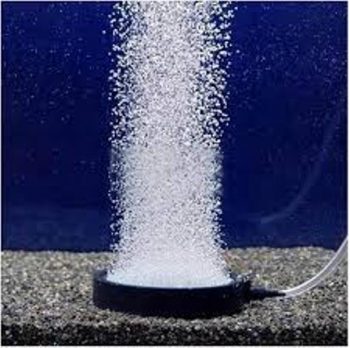

Sparging sage seeds lasts 10-12 hours.Air treatment of seeds promotes rapid seed germination in the soil.
Experienced gardeners recommend bubbling sage seeds in water with a few drops of Gumi. Sodium humate and microelements of this preparation penetrate the seeds through the air, in the future they help the seeds withstand adverse conditions. Seed germination up to 98%.
How to prepare the soil for planting
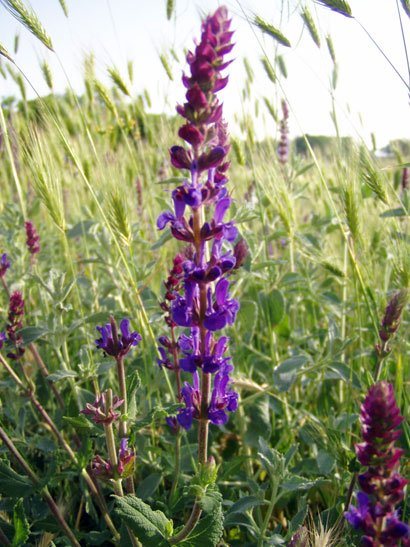

Growing and caring for sage will not cause trouble even for a novice grower.
Before planting salvia, it is necessary to properly prepare the soil. The plant will feel comfortable on limestone soil, which is characterized by high moisture permeability and low moisture retention.
There are annual, biennial and perennial species of salvia. When choosing the type of plant, it is imperative to take into account the climatic conditions, since if snowy frosty winters are characteristic of your area, then the bushes are unlikely to be able to survive them, and therefore it is simply pointless to choose perennial varieties for planting. The culture will feel great in a fertile substrate that contains sufficient nitrogenous fertilizers. If clayey soils dominate on the site, then to improve their quality you will need to mix them with a small amount of organic matter and river sand, which will improve their drainage properties and prevent moisture stagnation.
Reproduction of sage
Propagated in three ways:
- vegetatively - lignified cuttings;
- seeds and seedlings;
- dividing the bush or layering.
To obtain seedlings, seeds are sown in prepared containers in February-March. The first shoots appear in 1.5-2 weeks, and in the third week after planting, the seedlings dive into peat pots. In warm areas, already in April, seeds can be planted directly into open ground or used for winter planting. For spring sowing, the seeds are pre-soaked in a growth stimulator; in the fall, only dry seeds are embedded in the soil. The distance between the grooves is 15-20 cm, the depth is 4 cm.
The easiest way to propagate sage is by cuttings.
Cuttings are carried out at any time. To do this, semi-lignified shoots are cut into 15 cm long pieces and rooted in a vessel with water. New roots appear within 2 weeks.
The pivotal root system of sage has the ability to form well-developed adventitious processes, so in late summer or early autumn, the bush can be planted painlessly.

